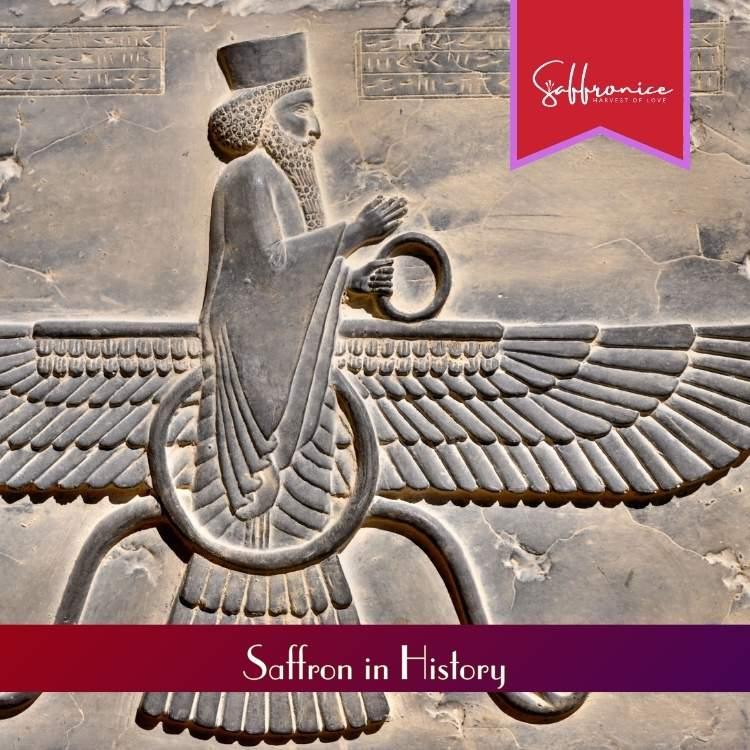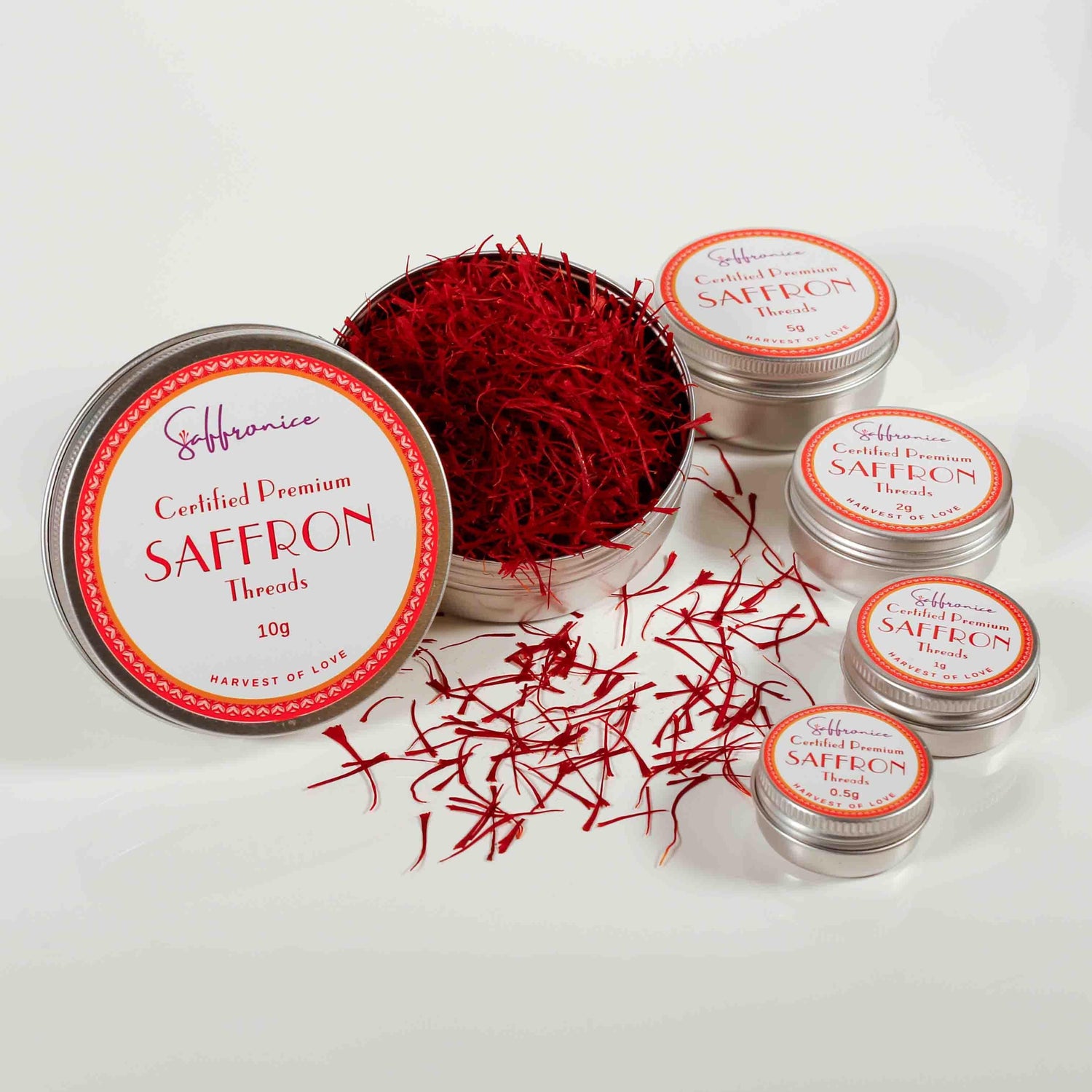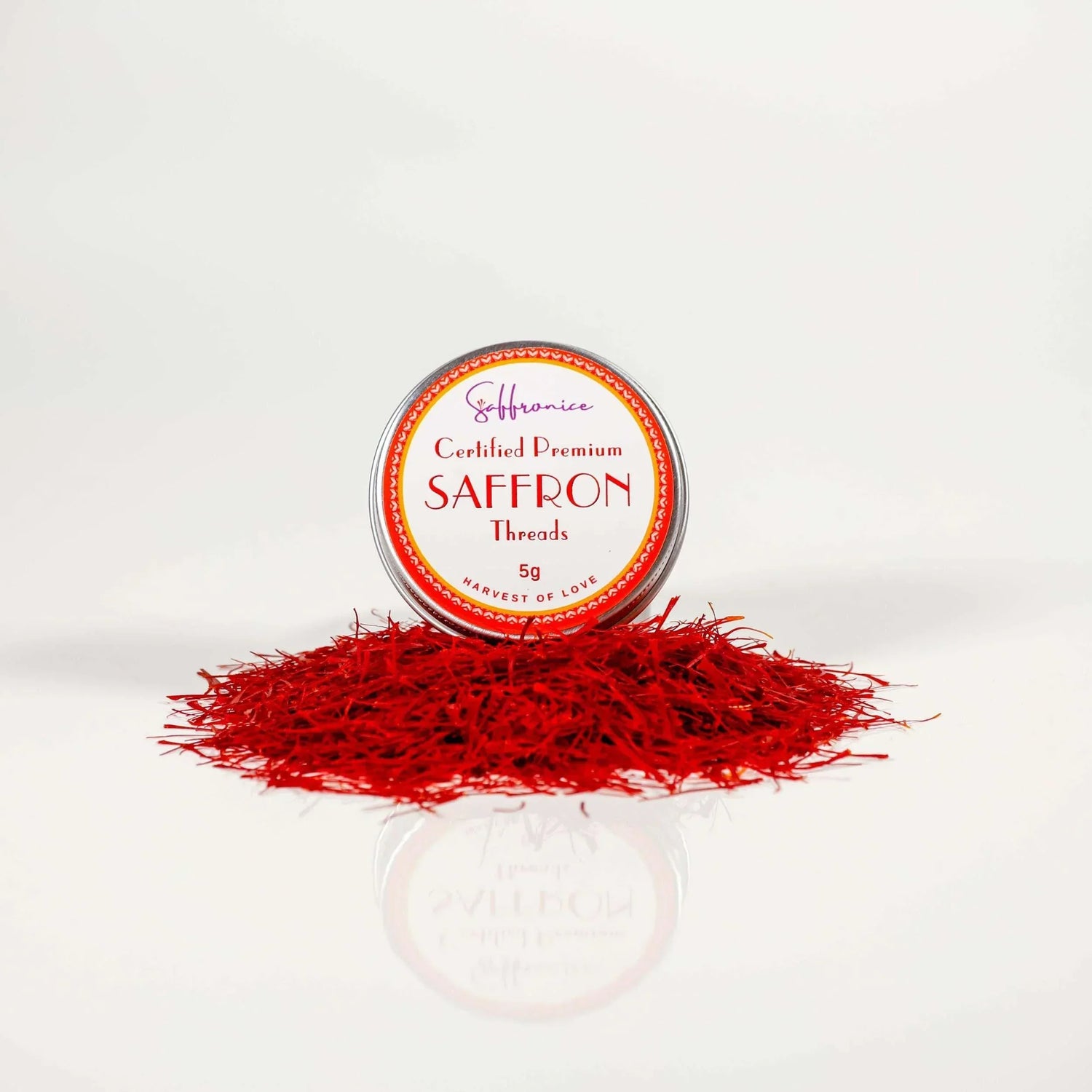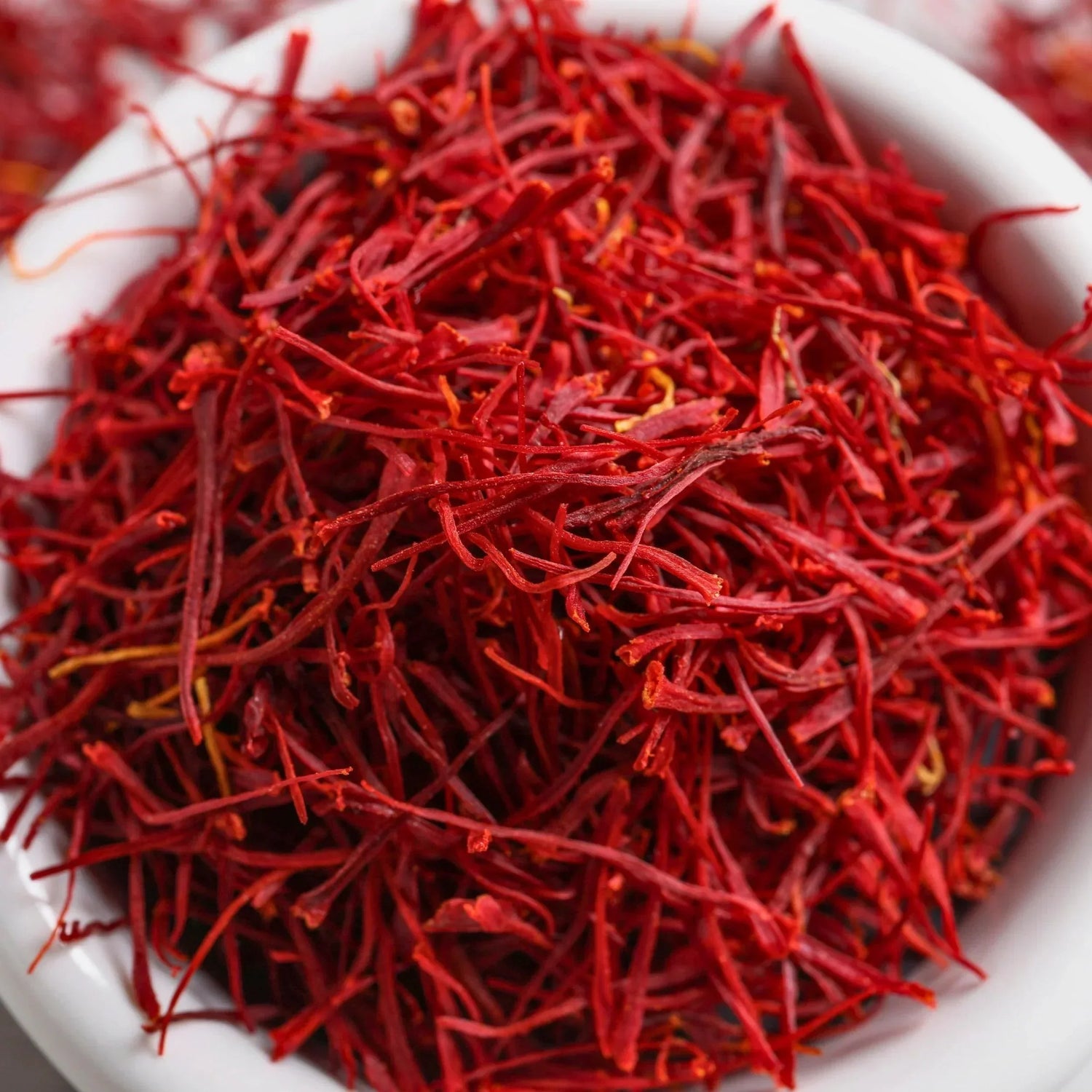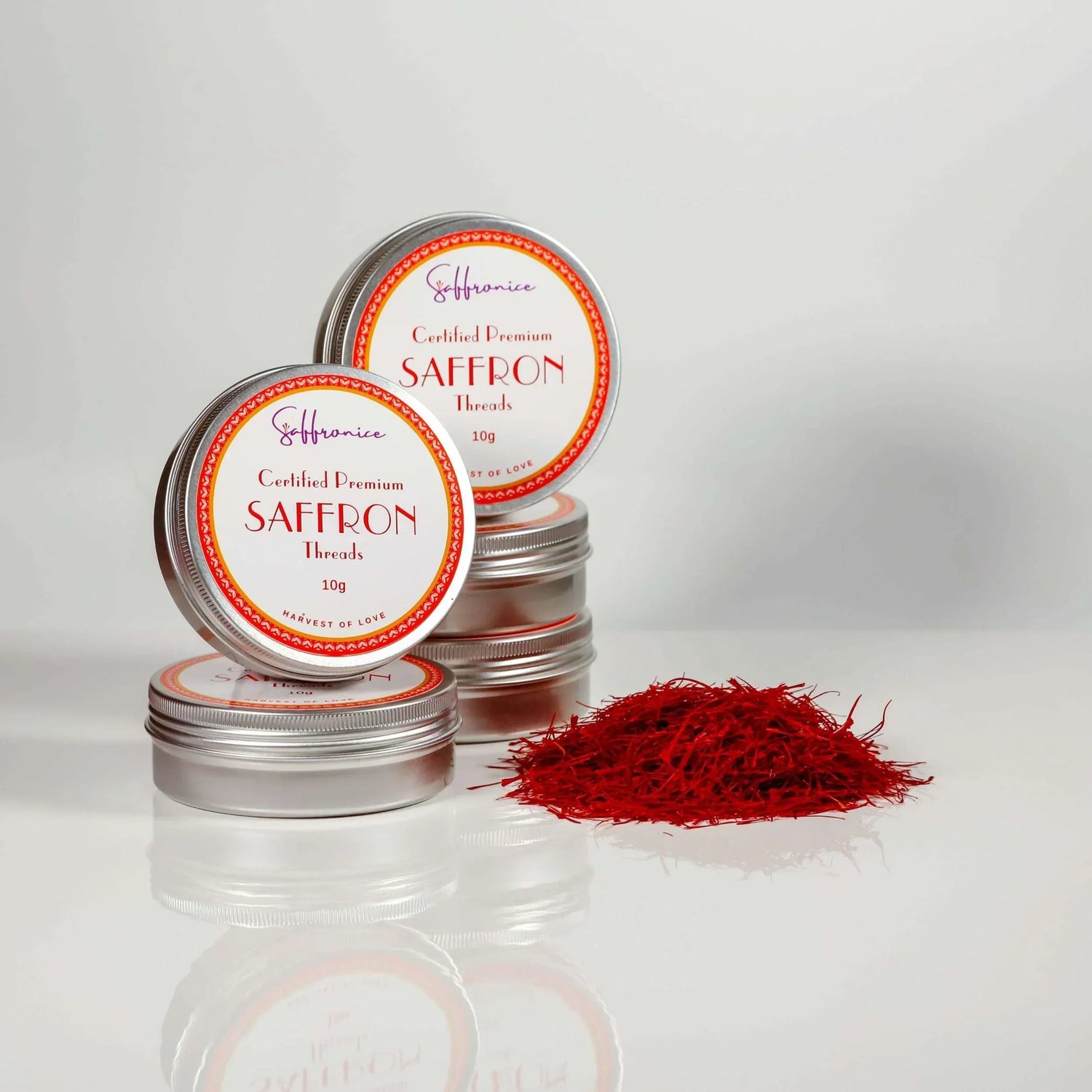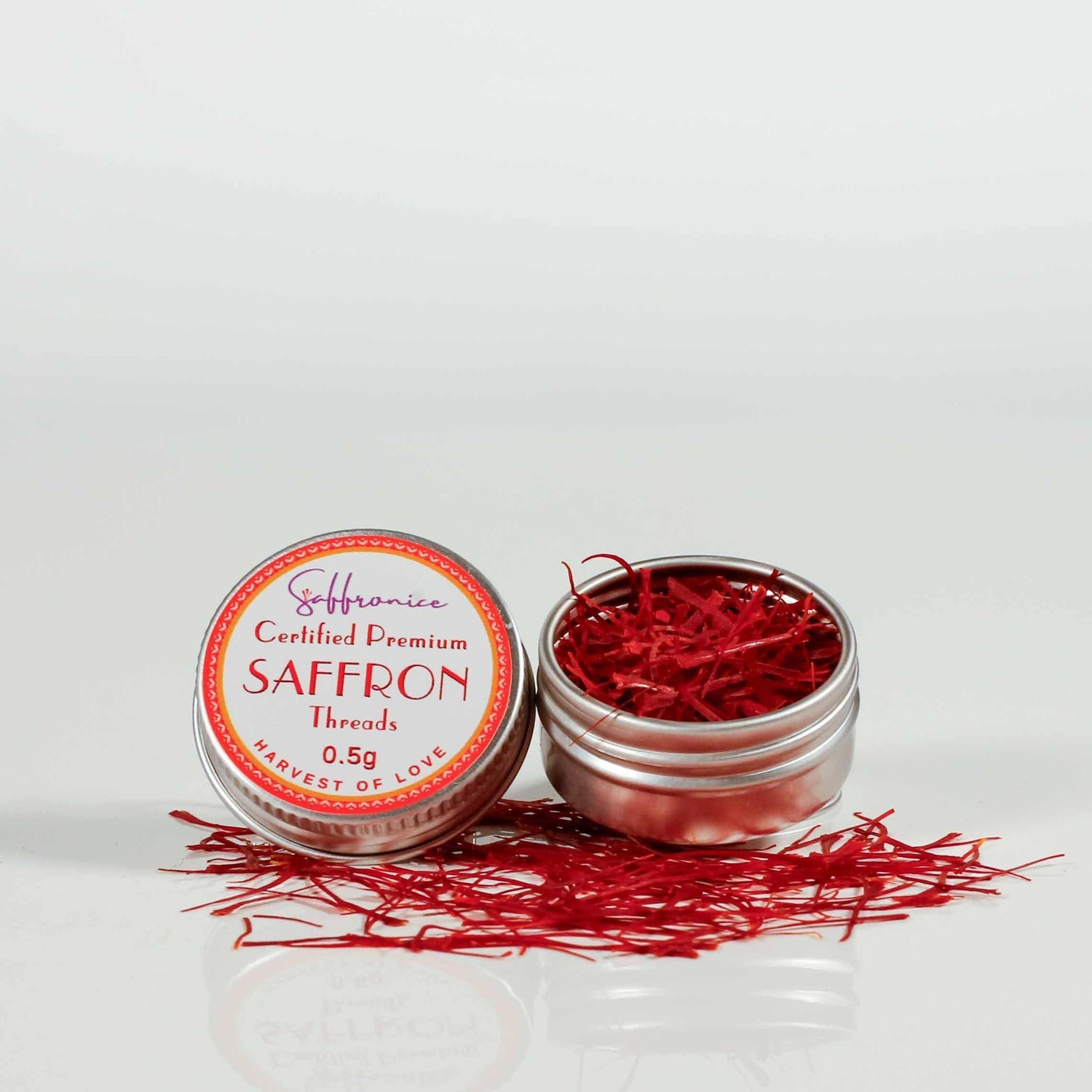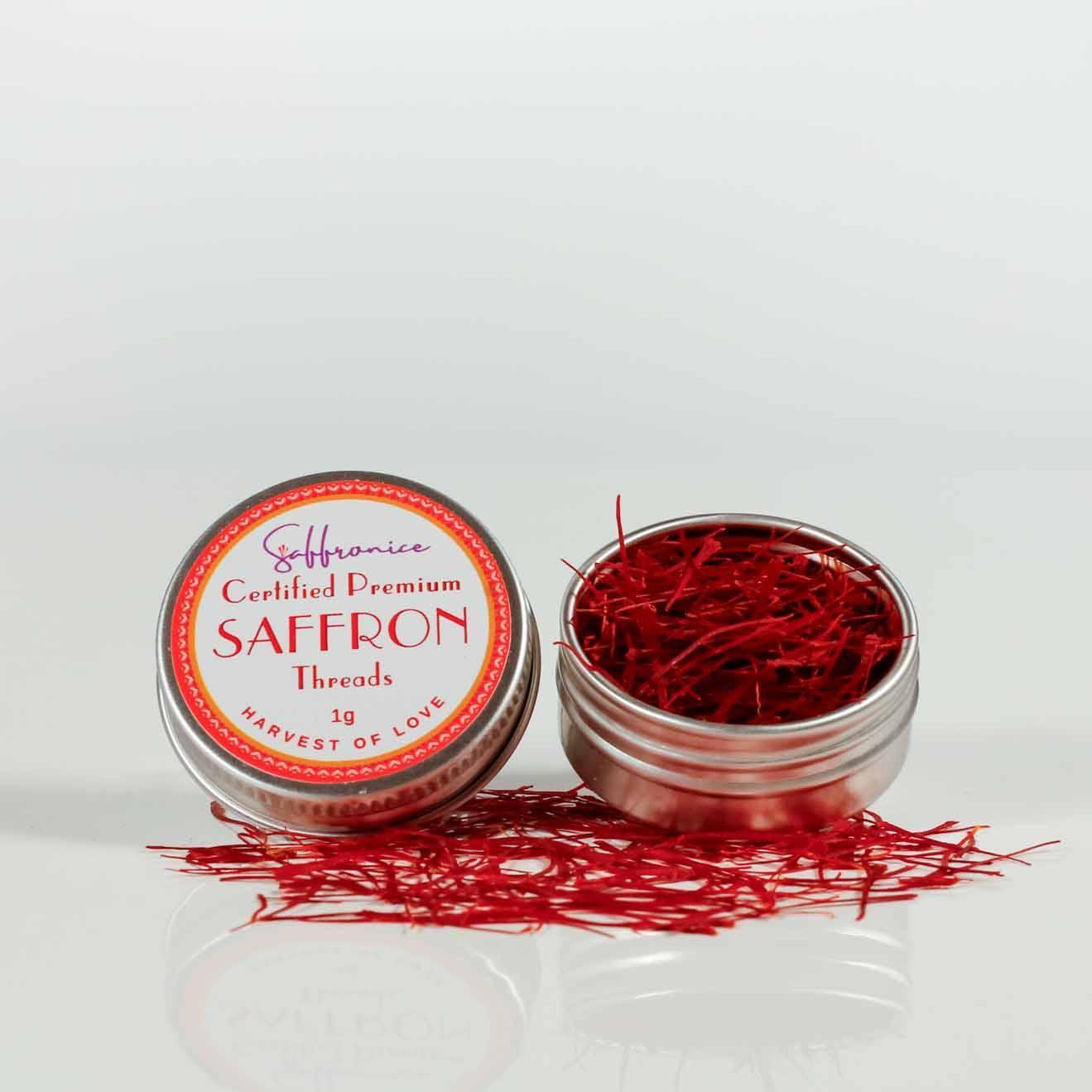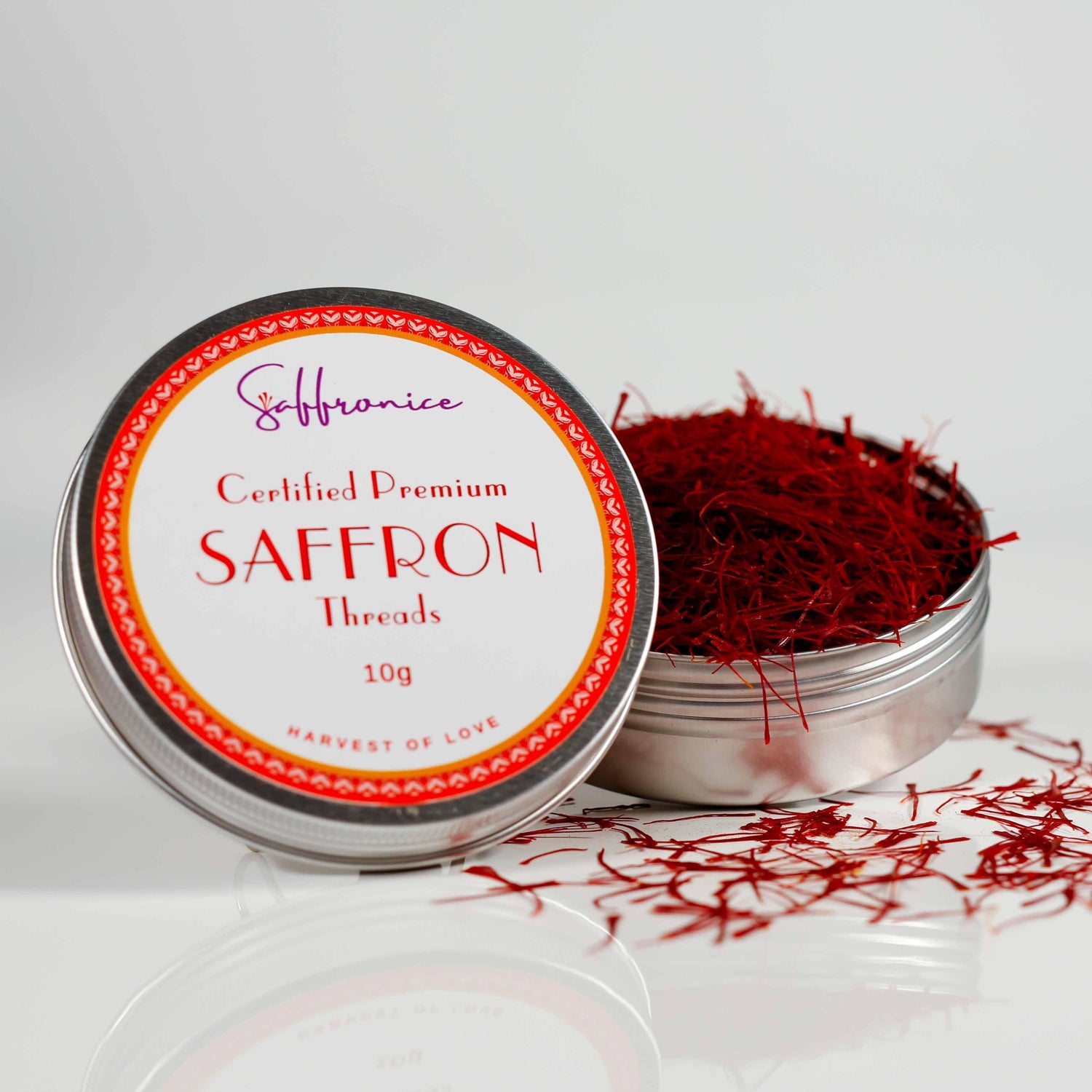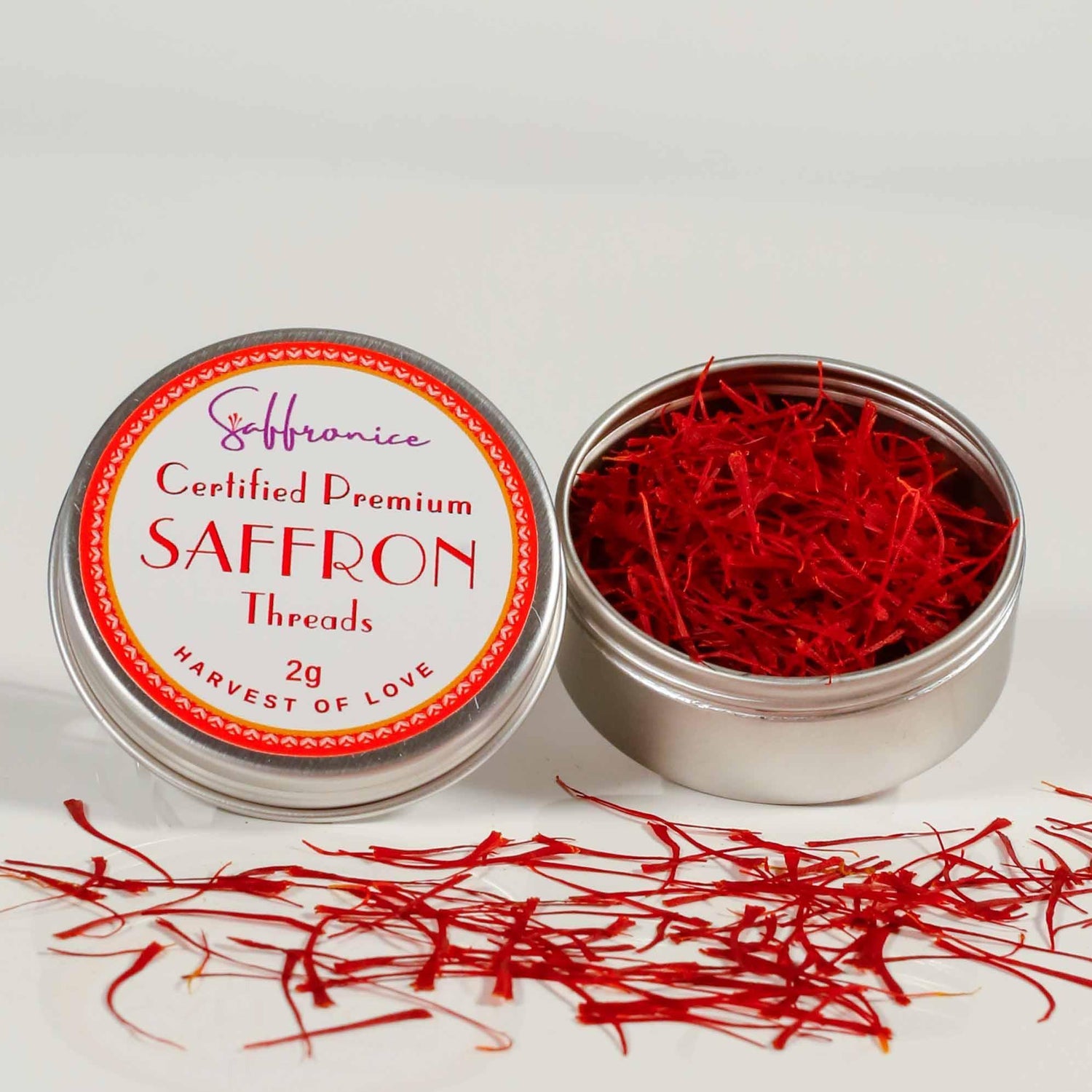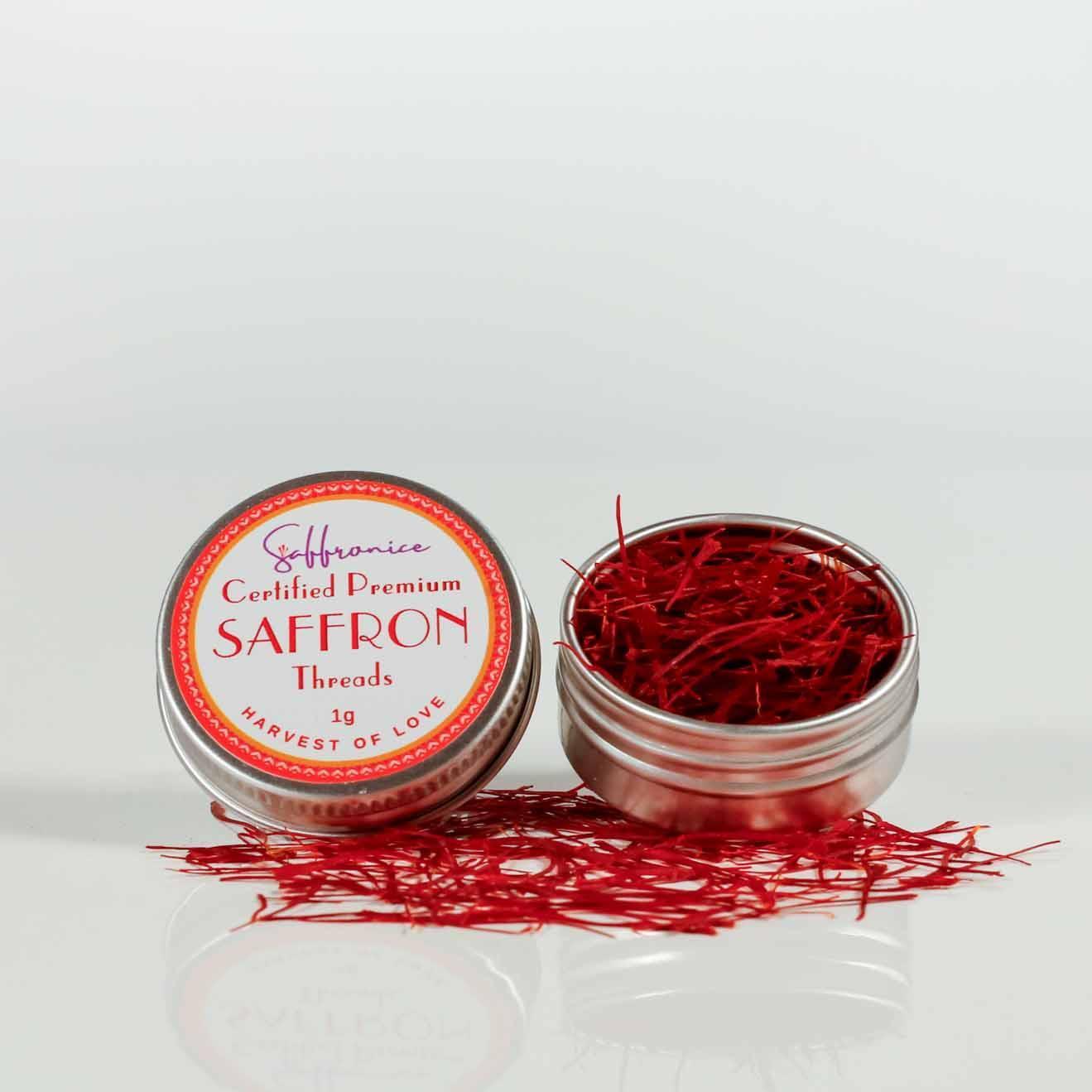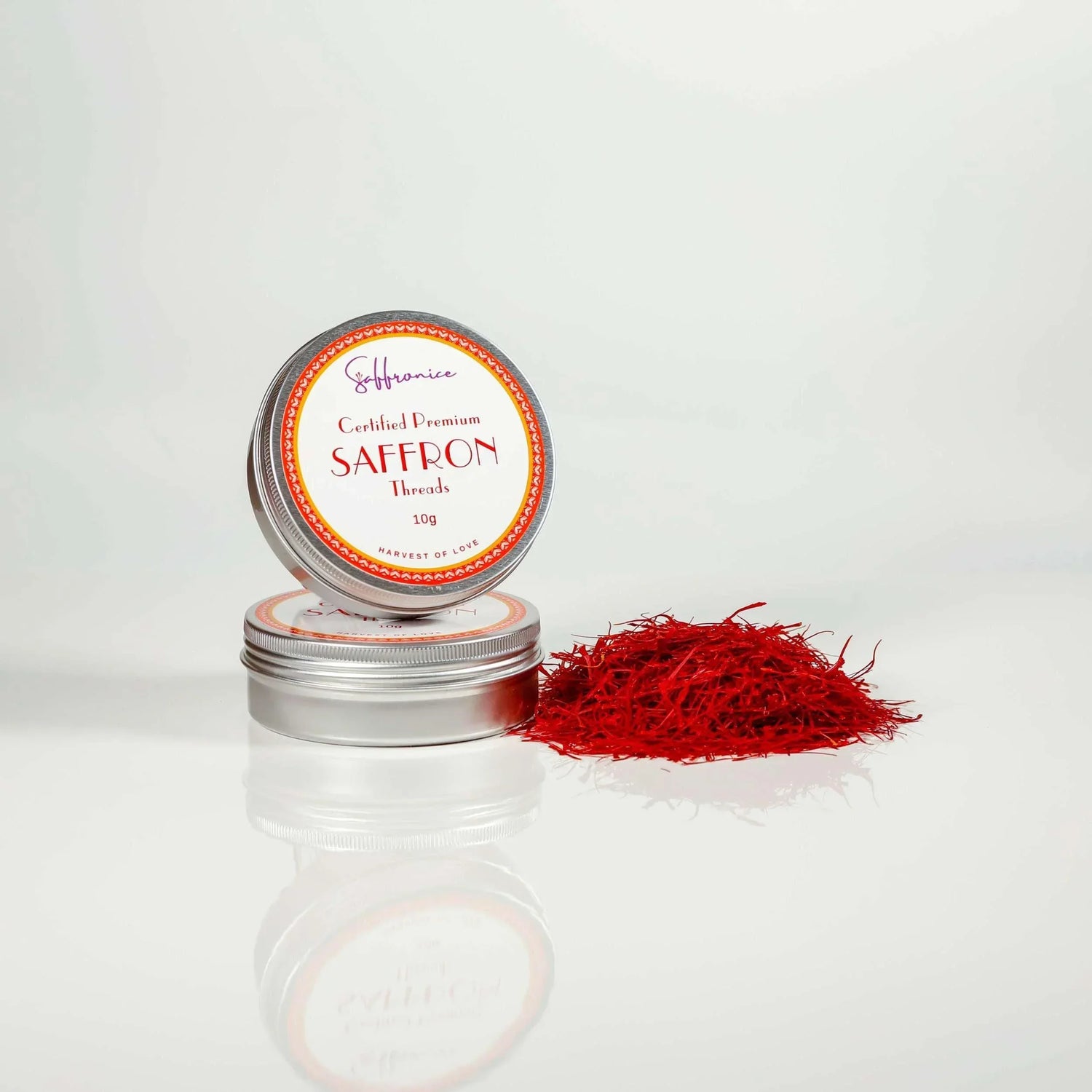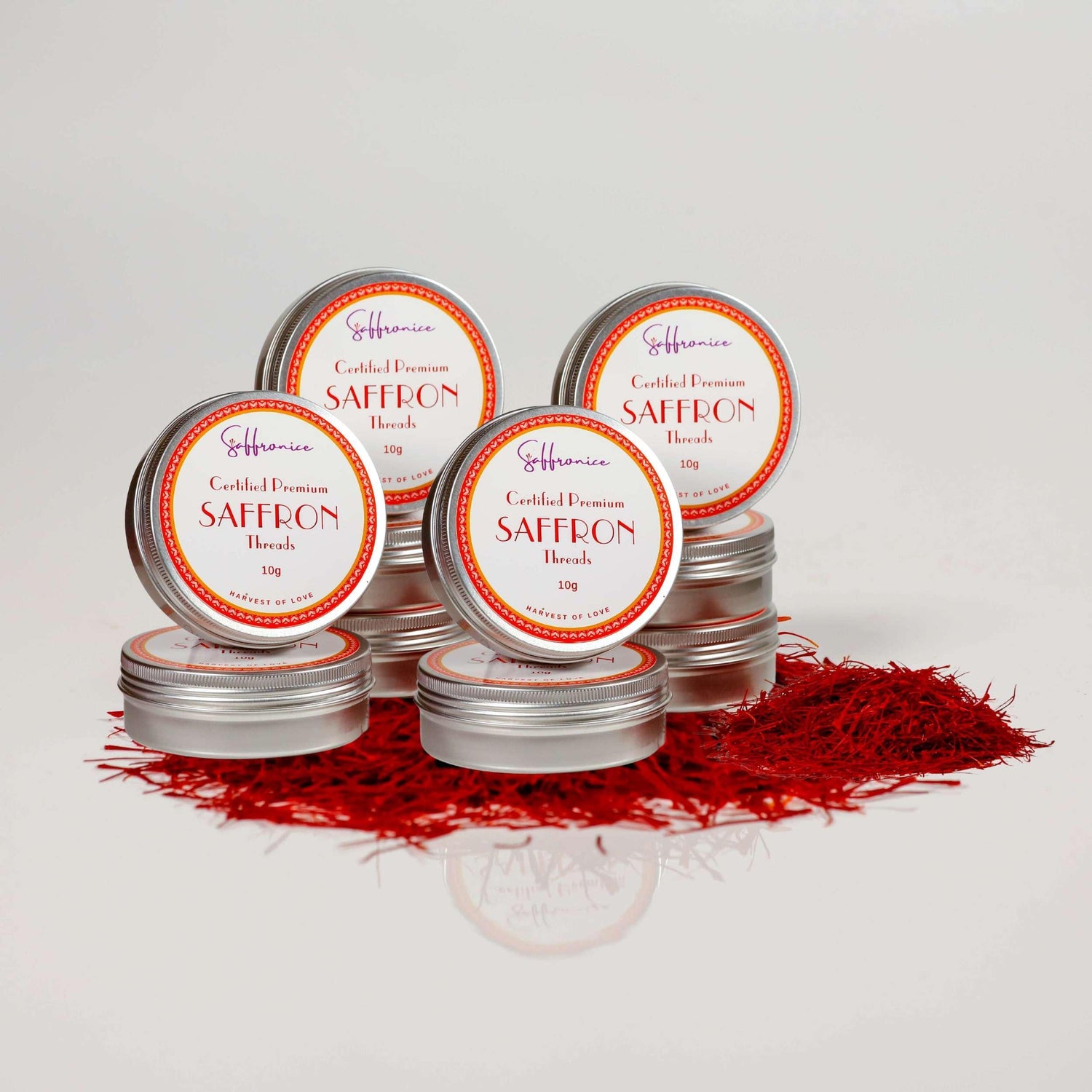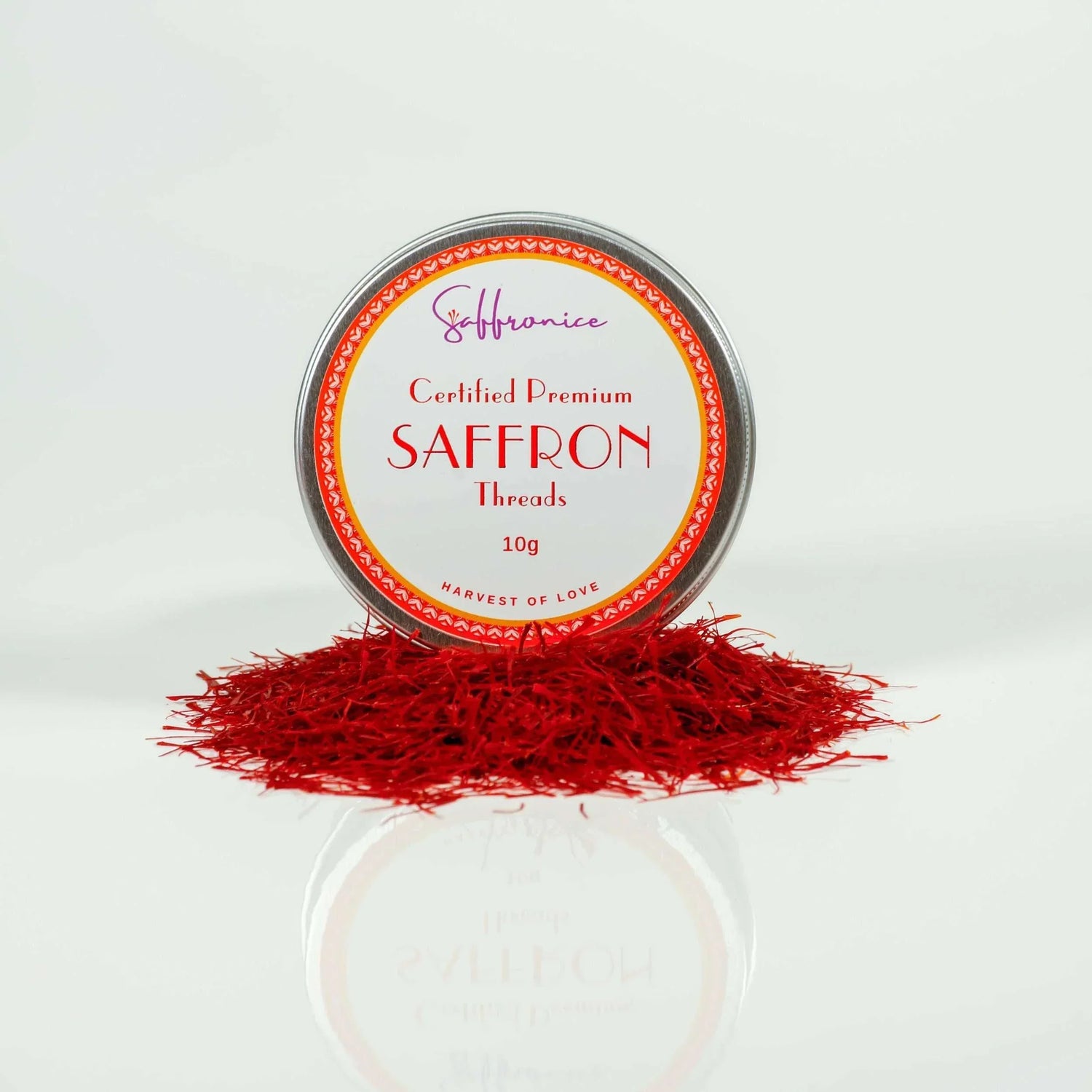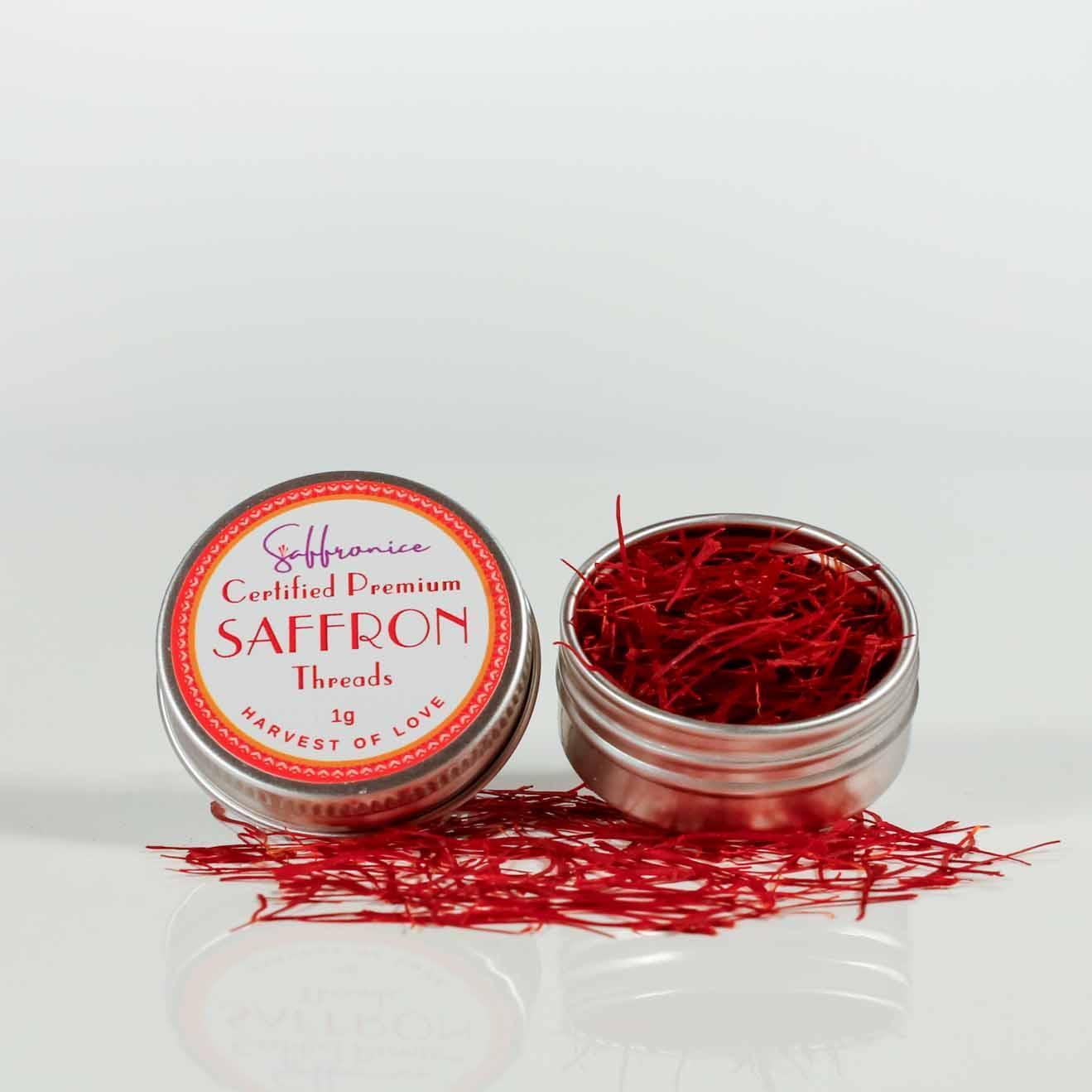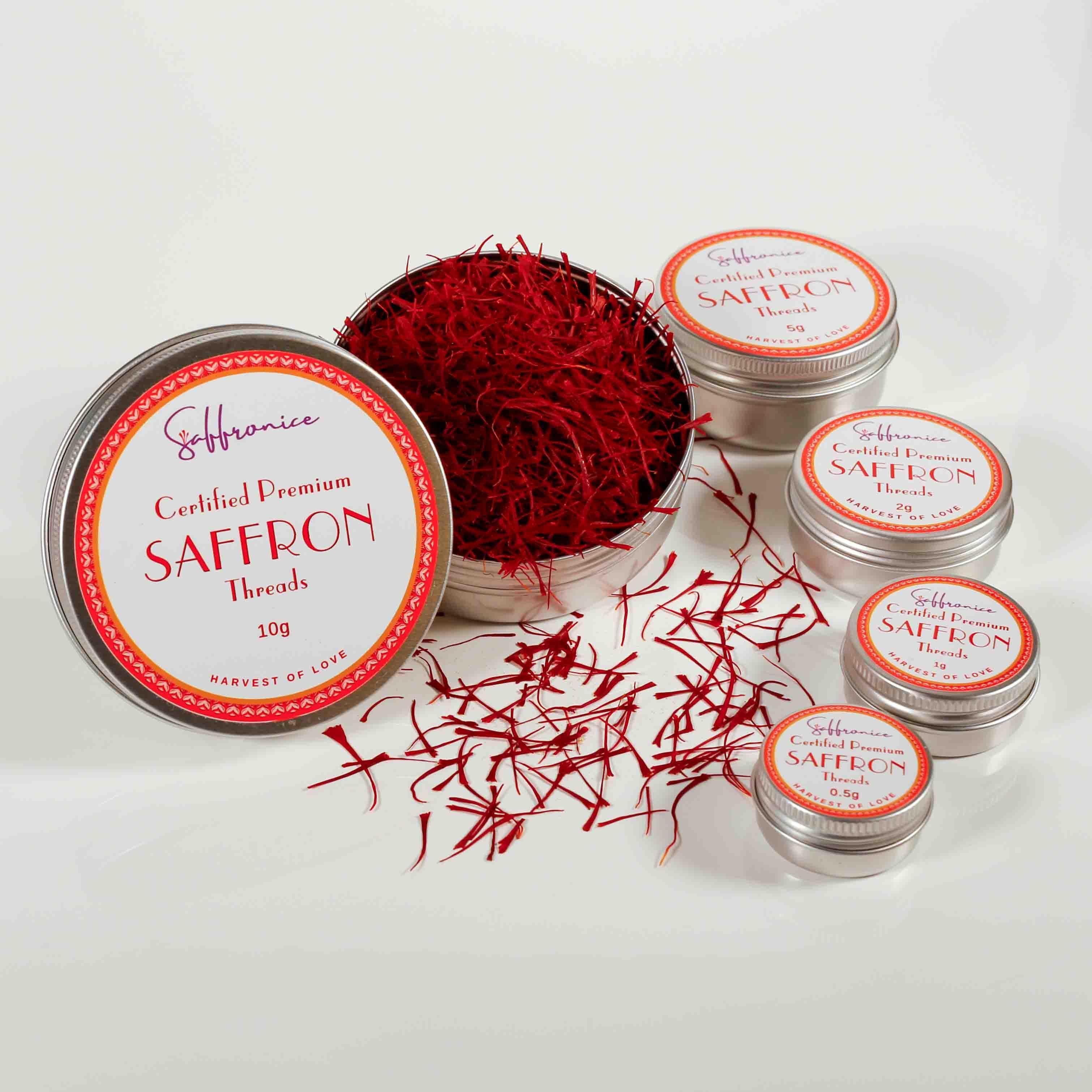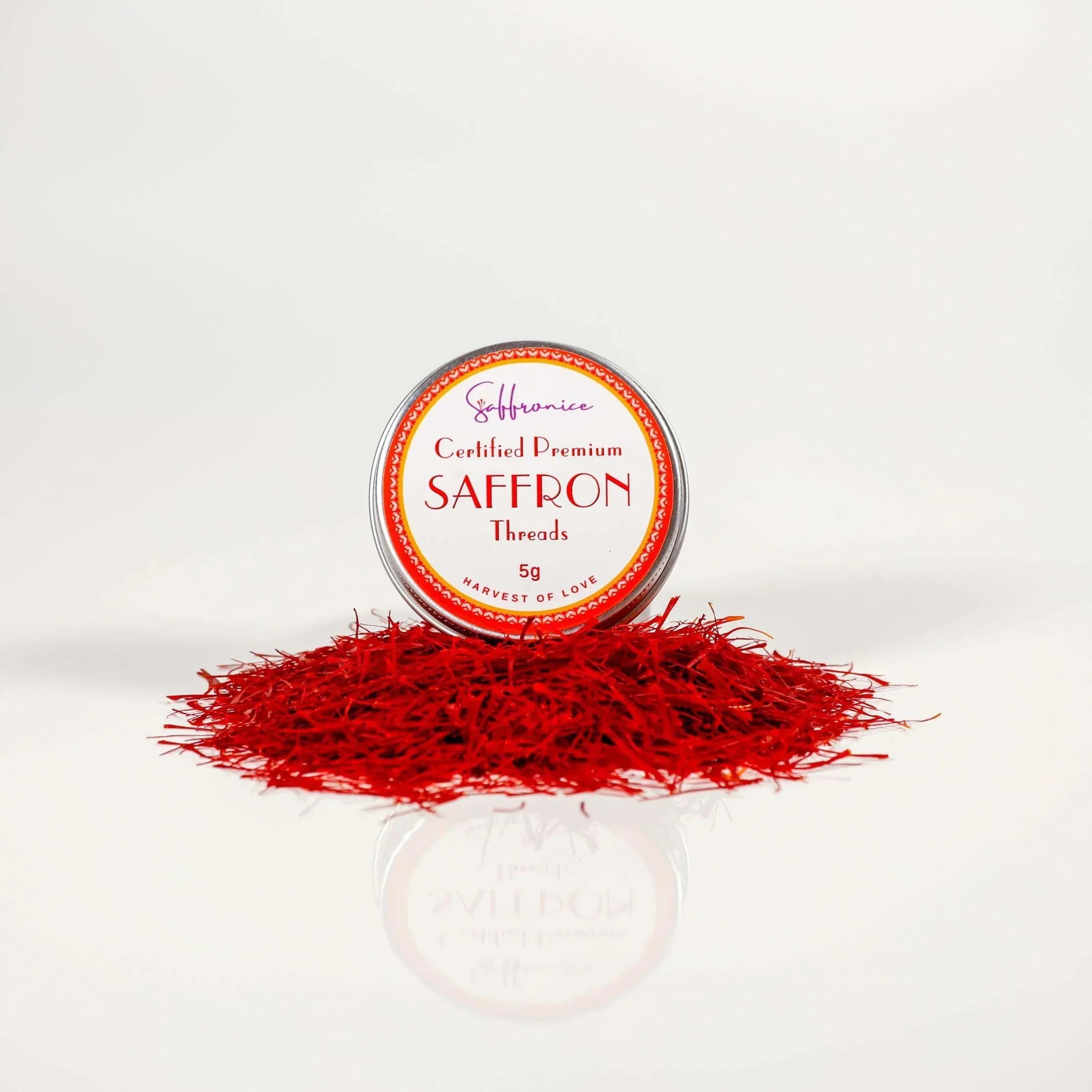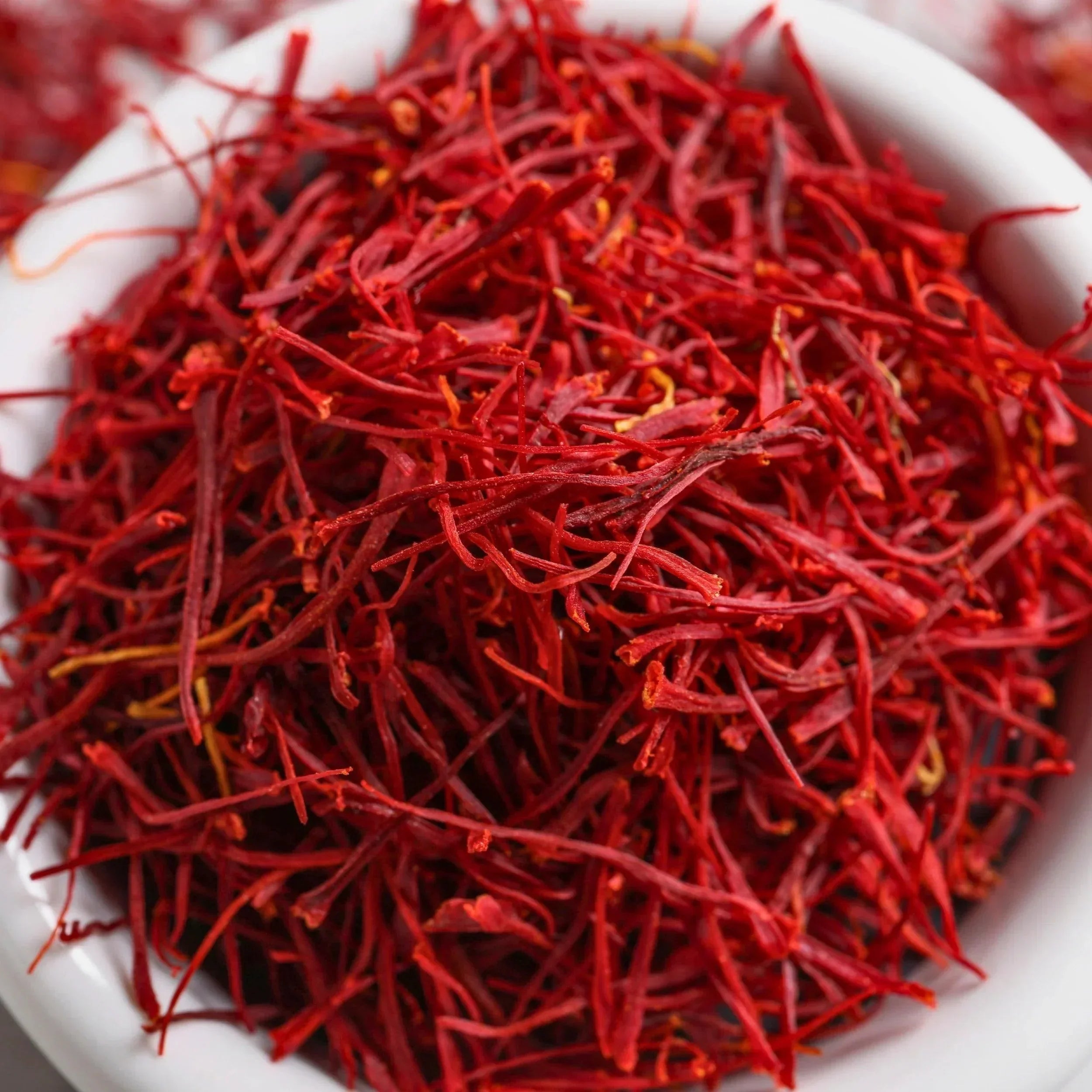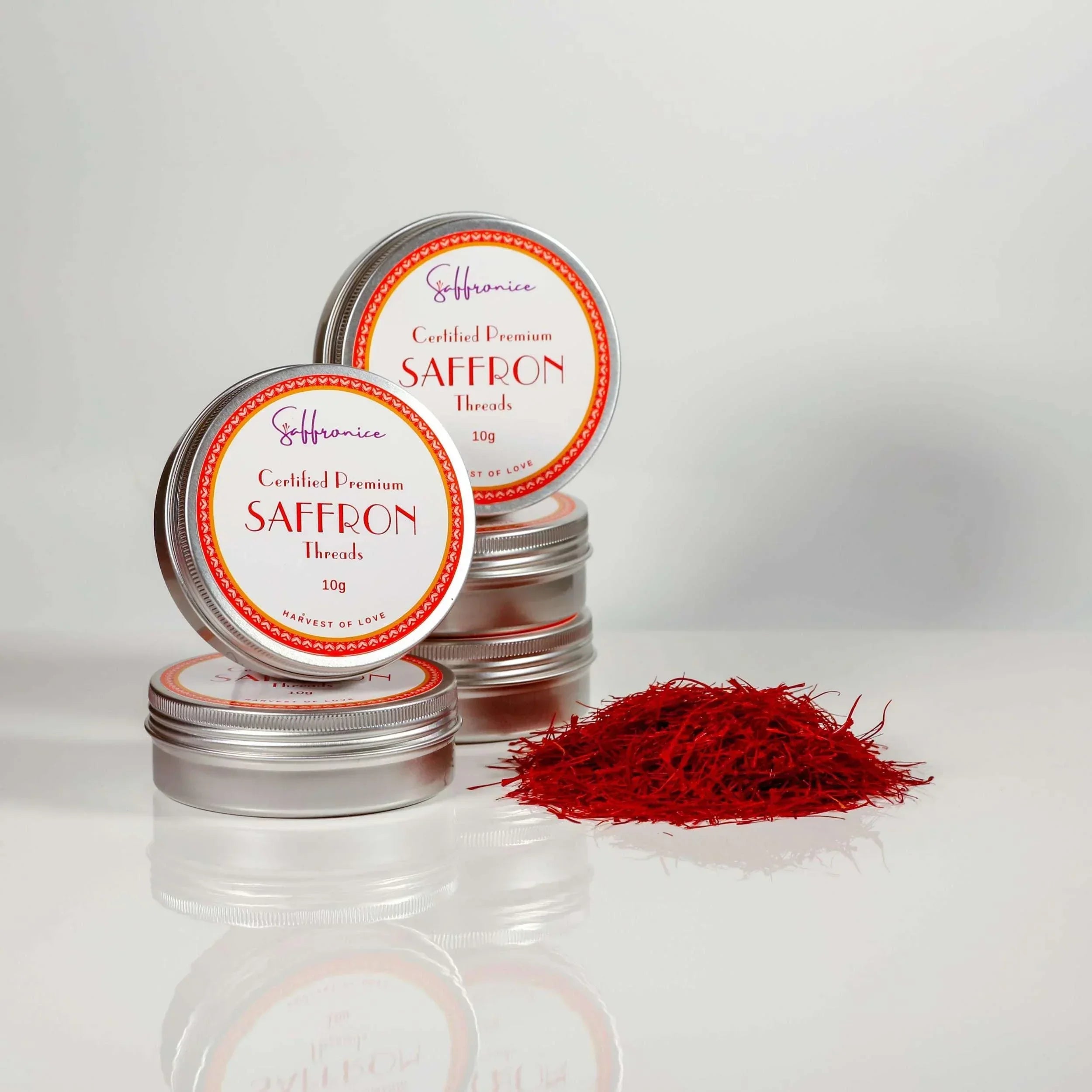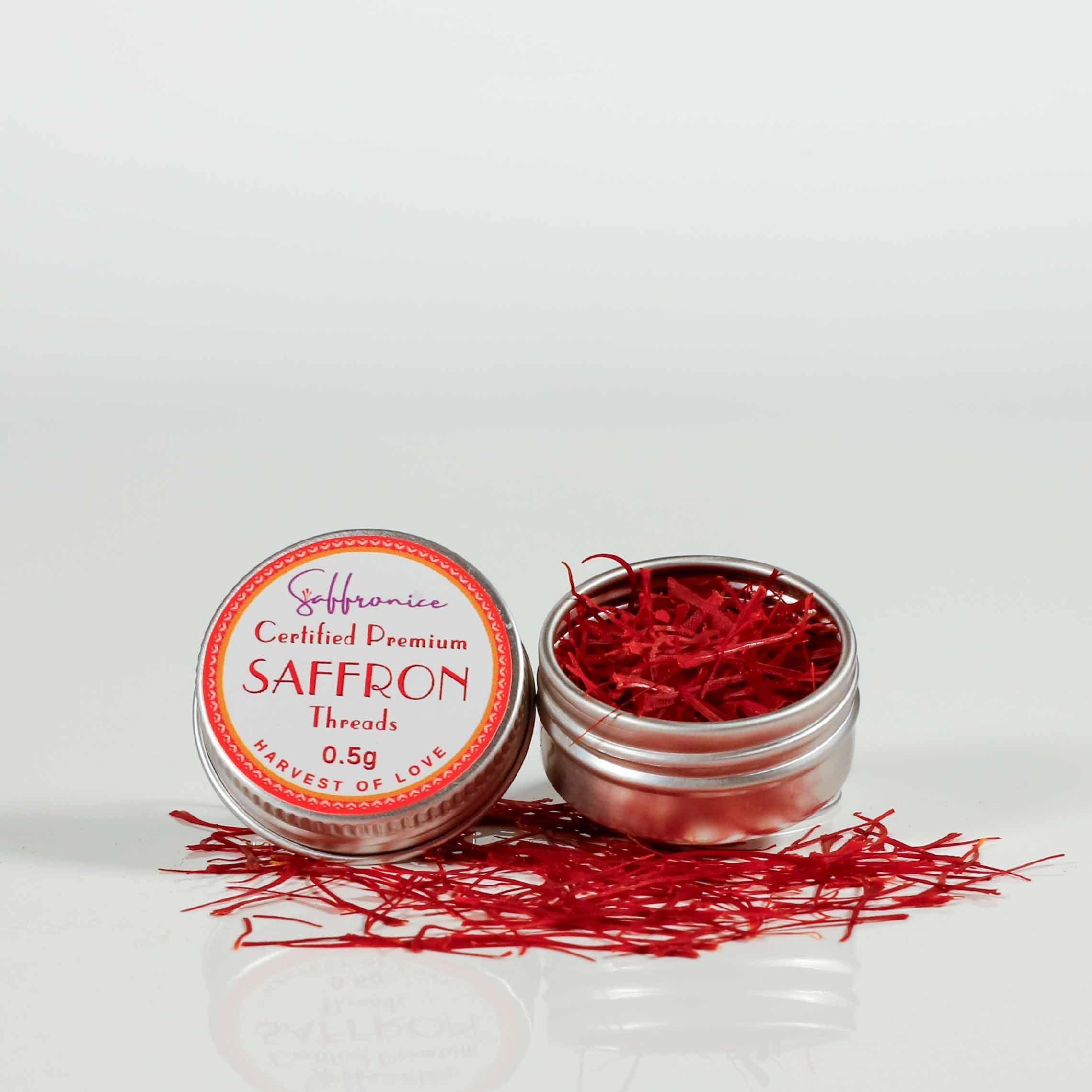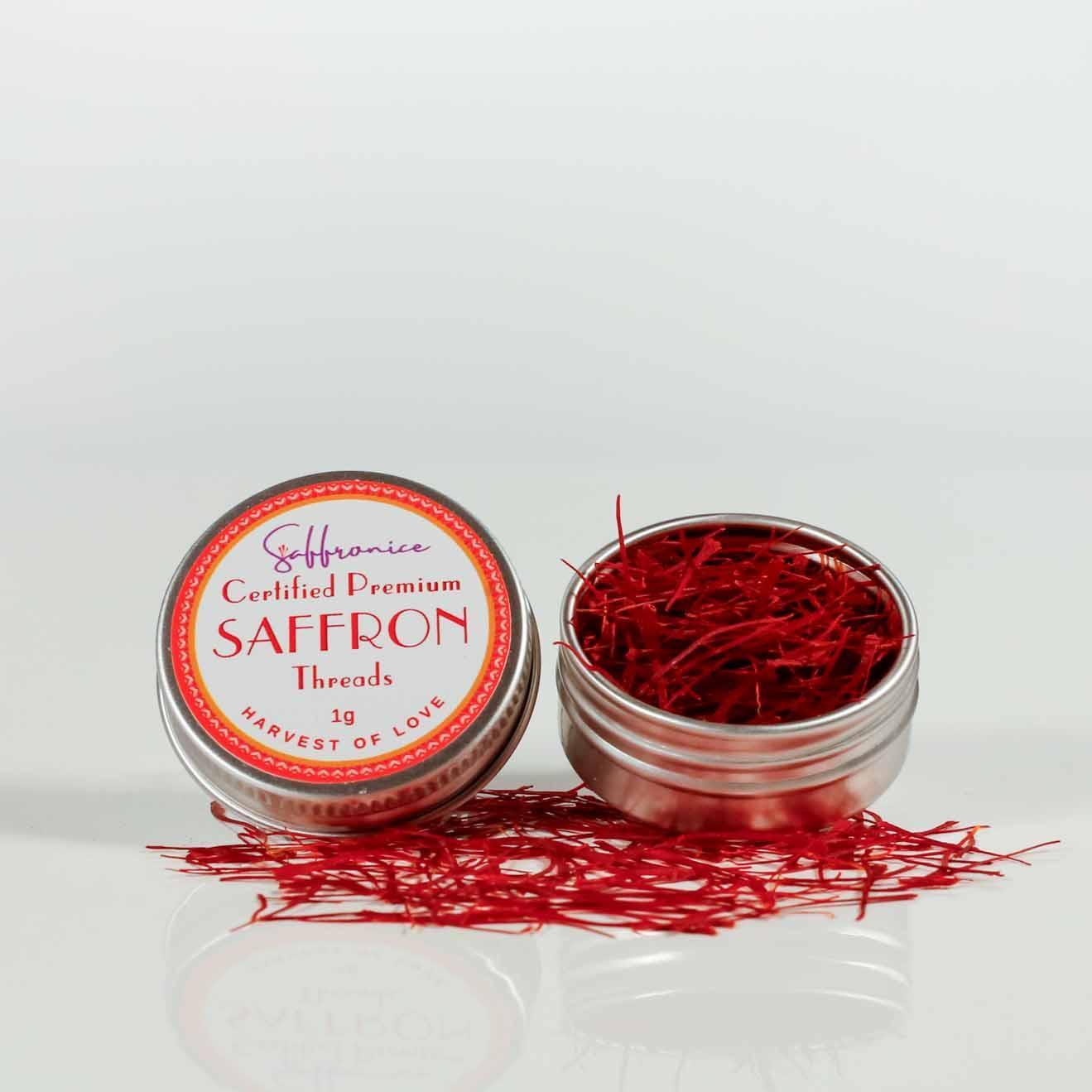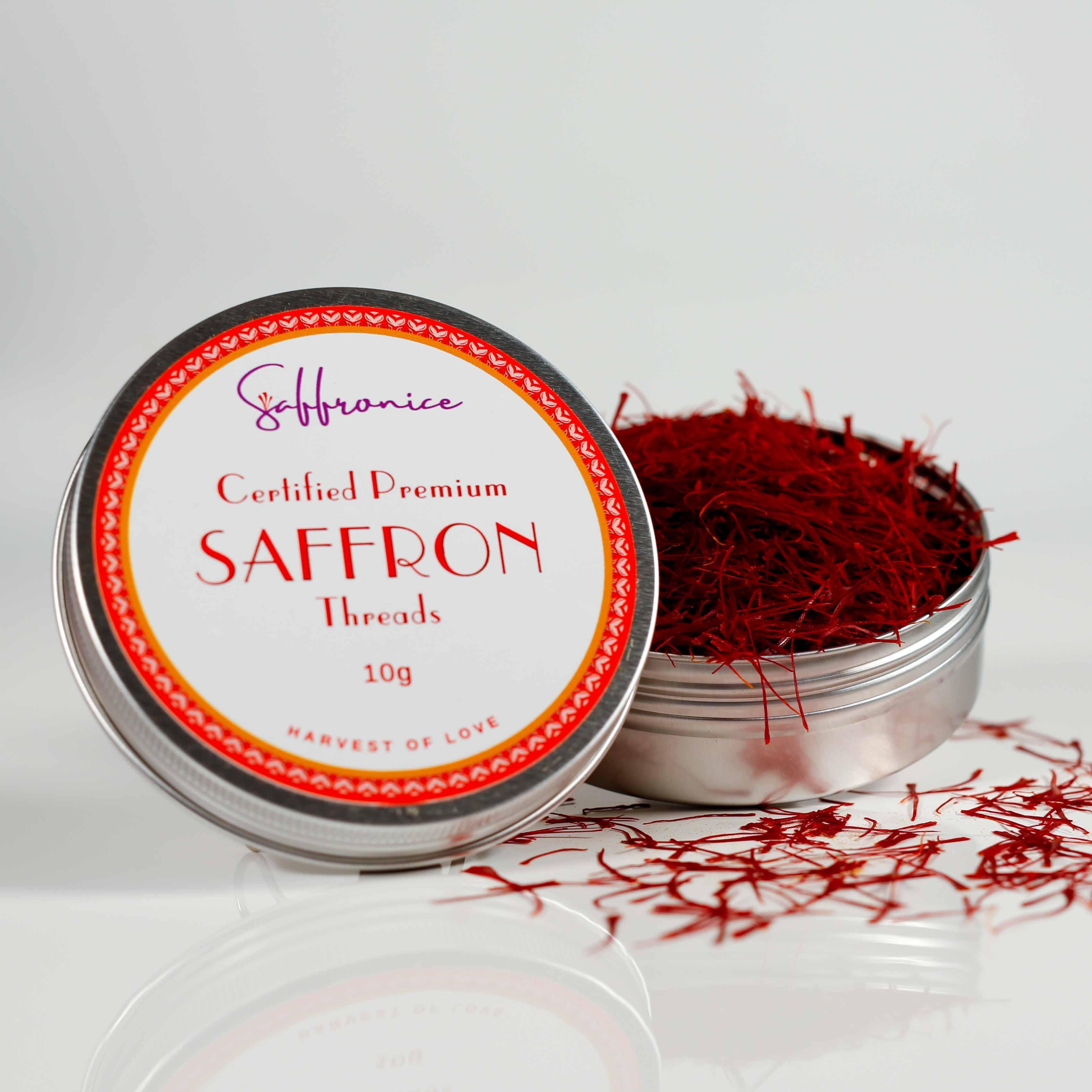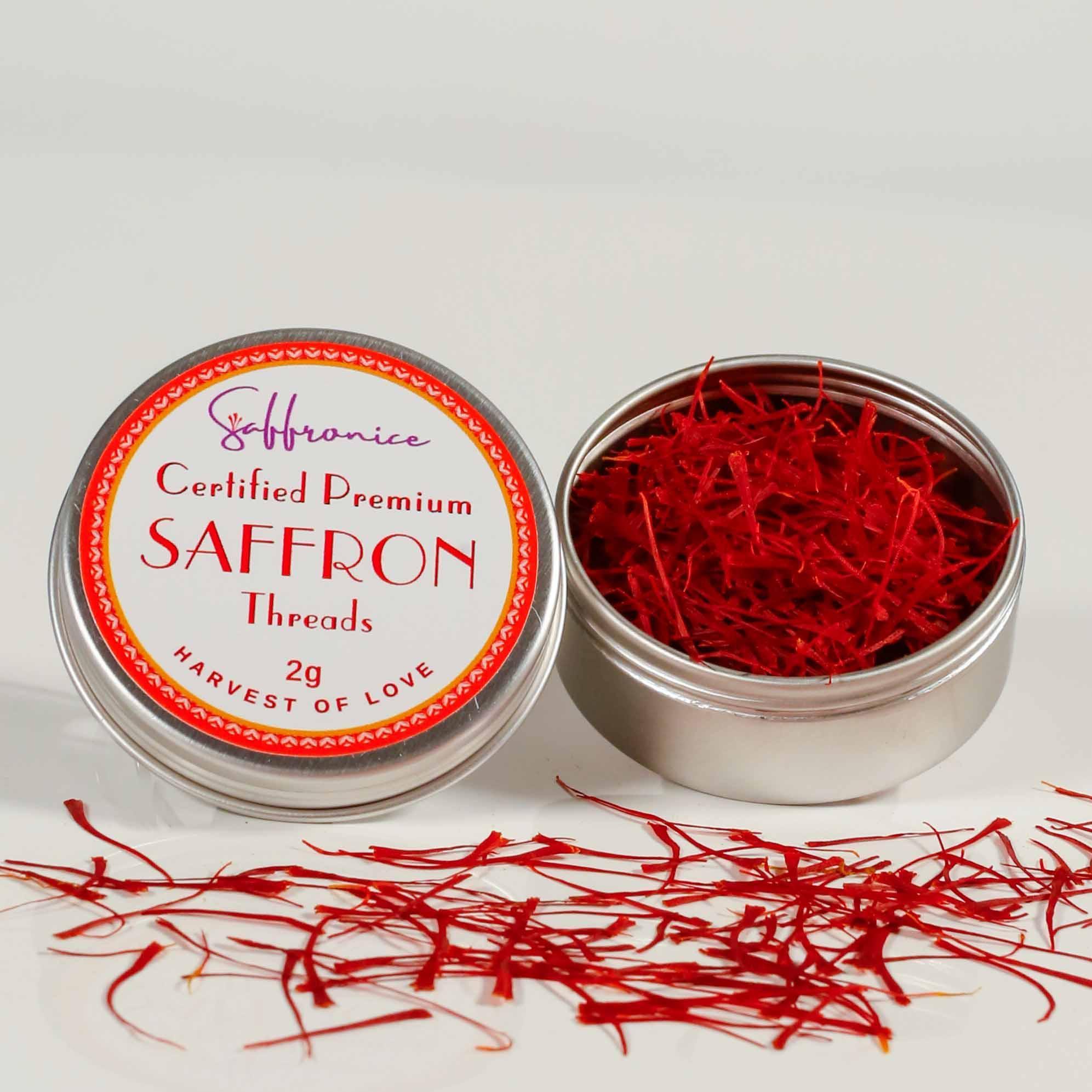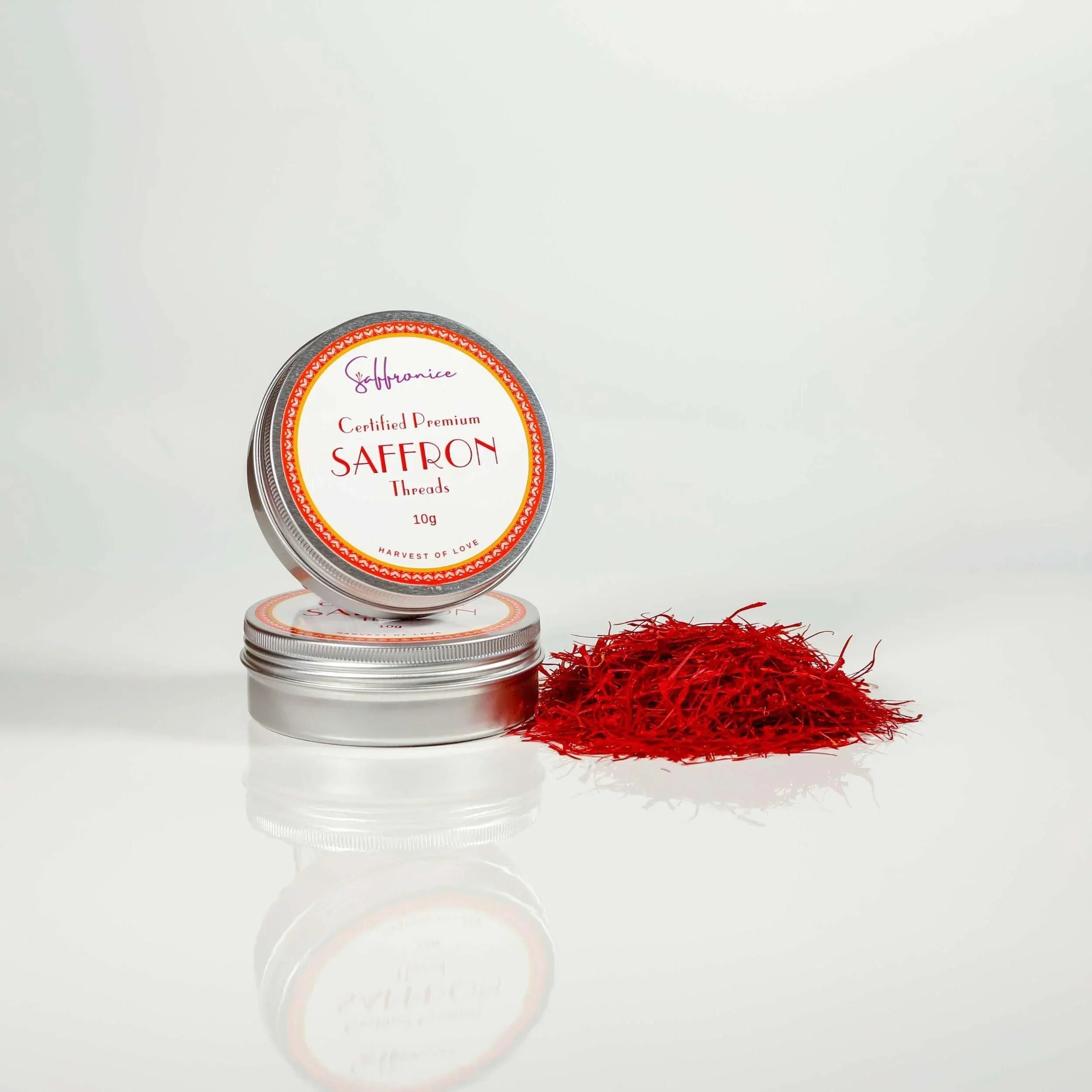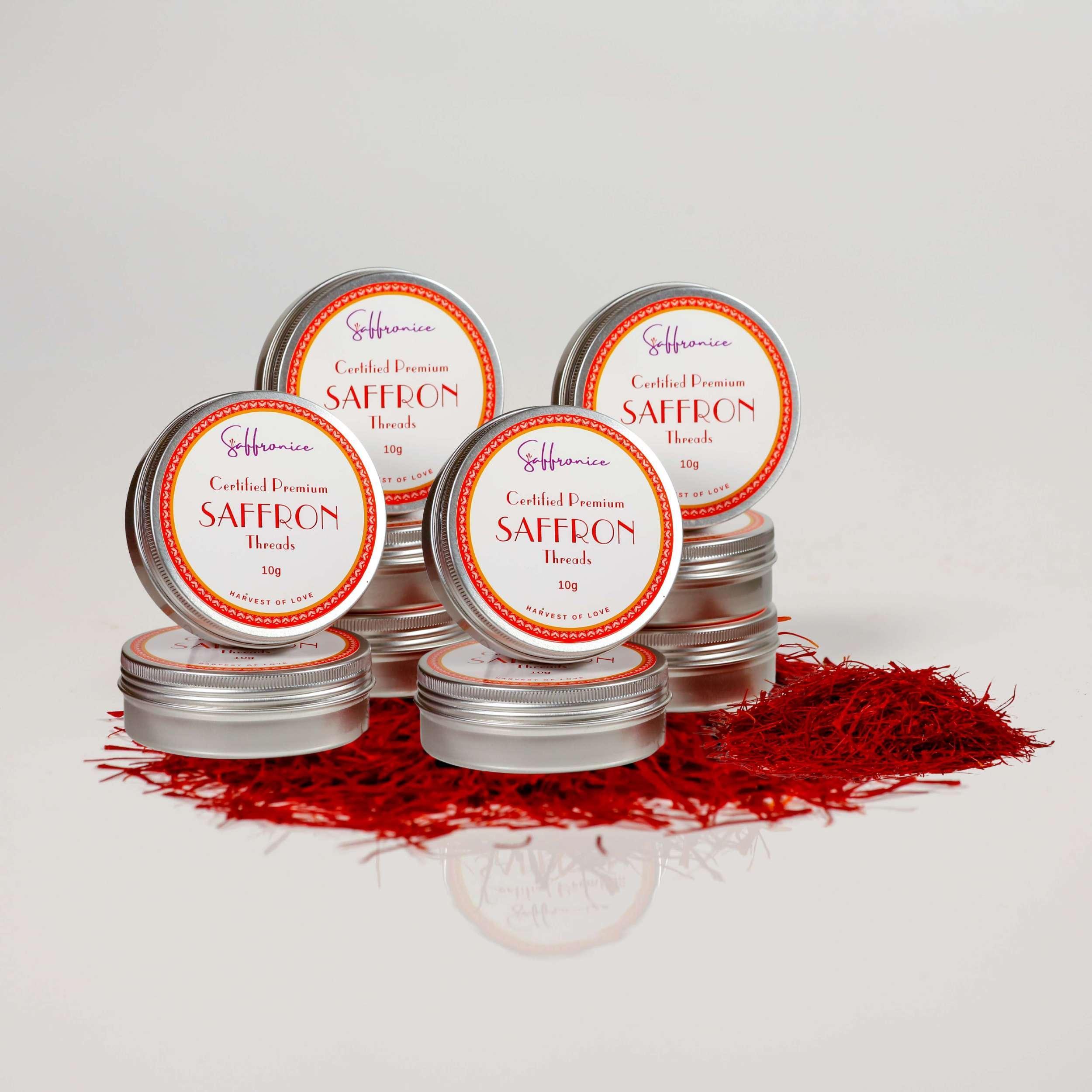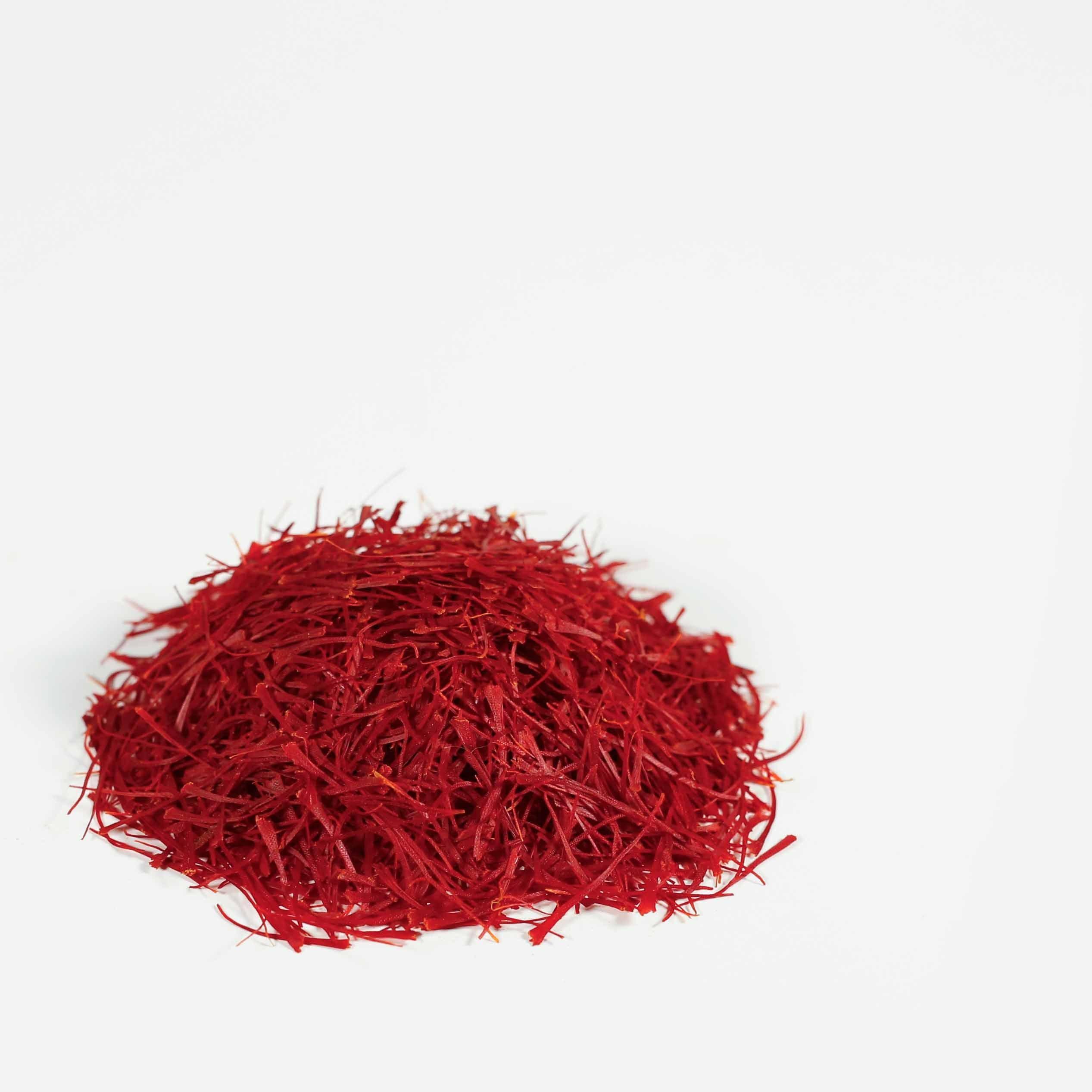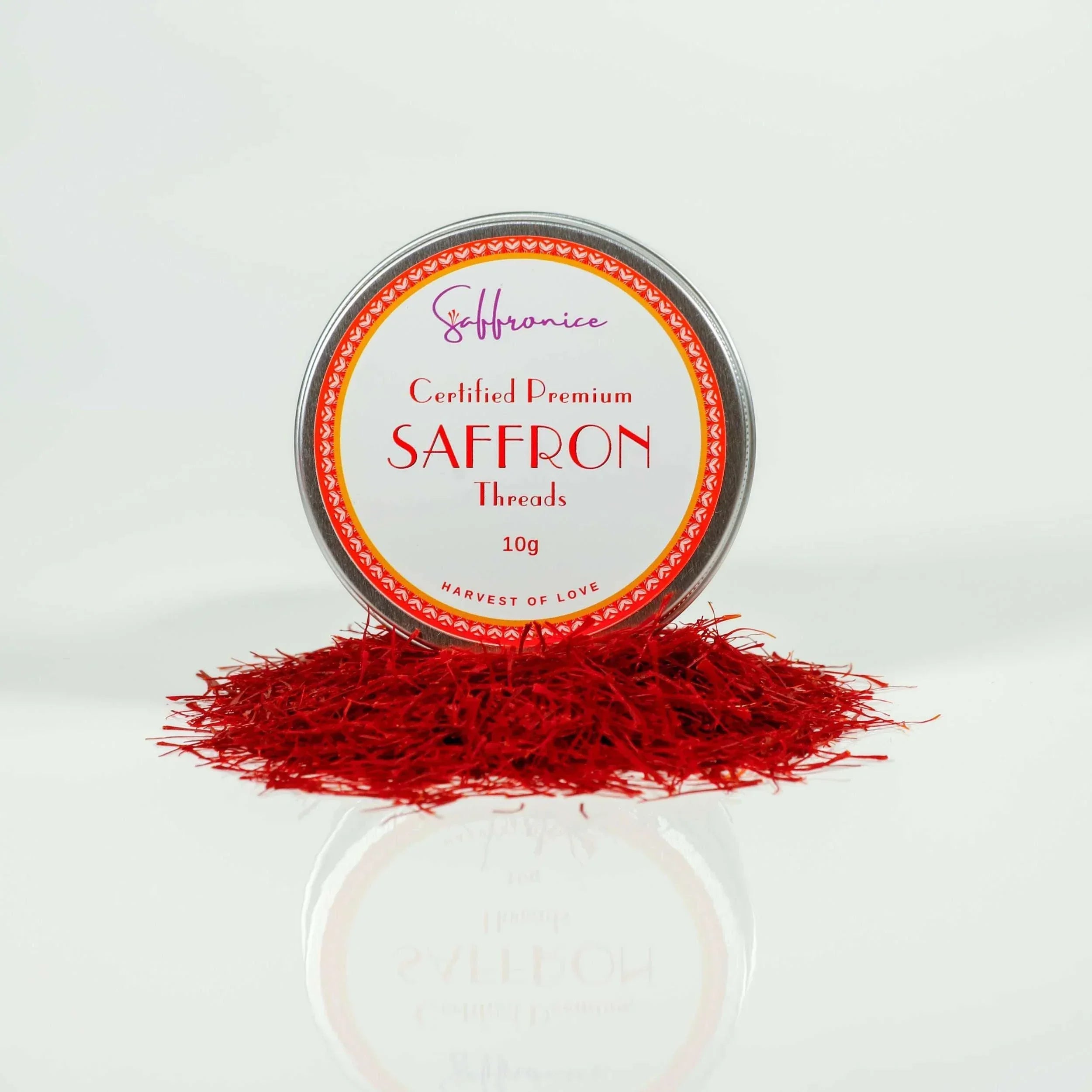Saffron, derived from the dried stigmas of the saffron crocus (Crocus sativus), is not just any spice. Often referred to as the “golden spice,” it has a history that stretches back over 3,500 years and spans multiple continents (Fernández, 2004). Known for its vibrant color, distinctive flavor, and aromatic properties, saffron has played a multifaceted role in various cultures and civilizations throughout history.
From ancient Persia to medieval Europe, saffron has been revered not just for its culinary uses but also for its medicinal and cosmetic applications (Negbi, 1999). The wild precursor to saffron, Crocus cartwrightianus, finds its roots in Greece and surrounding islands (Grilli Caiola & Canini, 2010). As trade routes expanded, this luxurious spice made its way into different regions, leaving a significant impact on local economies and cultures.
In this article, we will explore the rich and diverse history of saffron—how it shaped trade routes, influenced cultural practices, and became a symbol of luxury across centuries. We will also discover the journey of Persian saffron from ancient times to becoming a valuable commodity in global markets today.

1. The Origins of Saffron
The saffron crocus (Crocus sativus) is a unique plant renowned for its vibrant red stigmas, which are harvested and dried to produce the spice known as saffron. This plant is a triploid species, meaning it cannot reproduce without human intervention, making its cultivation quite labor-intensive (McGimpsey et al., 1997). Crocus sativus is believed to have originated from its wild ancestor, Crocus cartwrightianus, native to mainland Greece and the surrounding islands (Grilli Caiola & Canini, 2010).
Ancient Roots
Saffron has ancient roots in regions like Greece, Mesopotamia, and Persia. These areas played a crucial role in the early cultivation and use of saffron. Historical records suggest that ancient civilizations initially used saffron for various purposes including medicinal treatments, culinary enhancement, and textile dyeing (Negbi, 1999).
Meticulous Cultivation Practices
Due to the delicate nature of the saffron crocus, ancient cultivation practices were meticulous. Farmers would carefully hand-pick each flower early in the morning to preserve the quality of the stigmas. These practices have remained relatively unchanged over centuries, highlighting the enduring significance of this golden spice (Fernández, 2004).
Cultural and Economic Significance
Saffron's rich history is deeply intertwined with the cultural and economic fabric of these early civilizations. Its value went beyond just culinary use; it became a symbol of wealth and luxury across different cultures throughout history (Negbi, 1999).
2. Saffron's Role in Ancient Persia
Saffron was highly valued in ancient Persia, both in everyday life and in the royal courts. It was an essential part of their culture and cuisine. The spice was commonly used to enhance the taste of meals, adding its unique fragrance and vibrant hue to a variety of dishes (Basiri-Salehi et al., 2020). Today's premium saffron threads continue this tradition of culinary excellence. In addition to its culinary applications, saffron played a vital role in traditional medicine and dyeing processes, representing wealth and extravagance.
Saffron in Historical Accounts
Historical references from figures like Herodotus highlight saffron's significance in Persia. He documented its use in sacred rituals and as a valuable trade commodity (Herodotus, trans. 2003). Herodotus' accounts offer a glimpse into how saffron was revered not only for its practical applications but also for its ceremonial importance.
The Influence of Alexander the Great
The spread of saffron cultivation received a significant boost through the influence of Alexander the Great. His conquests facilitated the exchange of agricultural practices between regions. As he traveled through Persia, he came across saffron fields and recognized the value of the spice, helping to spread it throughout his empire (Cartwright, 2018).

3. Saffron in Persian Medicine
One of the most significant contributions to the understanding of saffron's medicinal properties comes from the Persian polymath Avicenna (Ibn Sina) (980–1037 CE). As an Iranian who understood several languages and cultures firsthand, Avicenna formulated unique medical compositions using over 25 herbal medicines, including saffron, and wine as an anesthetic during surgical procedures (Modanlou, 2008). In his seminal work, The Canon of Medicine, Avicenna meticulously documented the therapeutic benefits of saffron. He recognized its potential as an analgesic, anti-inflammatory, and mood enhancer (Avicenna, trans. 1999). Modern research has validated these benefits, which is why we offer saffron supplements for mood support based on this ancient wisdom.
Advanced Medical Practices
Avicenna's sophisticated use of saffron demonstrated a spectacular level of mastery and scientific understanding. His precise formulations highlighted the deep knowledge Persians had of native herbal medicines, further solidifying saffron's importance in Persian medical heritage (Modanlou, 2008).
Cultural Significance
- Aphrodisiac Properties: Saffron was believed to possess aphrodisiac qualities. This perception added to its allure, as it was used in various love potions and romantic rituals.
- Mythological Associations: In Egyptian mythology, saffron's golden hue symbolized the sun god Ra. Its vibrant color was seen as embodying divine power and energy, making it integral to religious ceremonies and offerings.
The usage of saffron extended beyond mere luxury; it was interwoven with the cultural and spiritual fabric of ancient Egypt. By understanding these practices, we gain insight into how this precious spice transcended its culinary uses to become a symbol of opulence and divine favor in Egyptian society. To delve deeper into the origins of this valuable spice, you can explore where saffron comes from, which provides an overview of its historical cultivation and cultural significance.
4. Medieval Europe and Saffron
Saffron's journey to Europe is a testament to the spice's enduring allure. The Moors, during their conquests in the Iberian Peninsula, introduced saffron to European shores (González de los Santos, 2005). This golden spice quickly captivated medieval society.
Key Uses in Medieval Europe
1. Medicinal Properties
The Middle Ages saw a surge in the use of saffron for its medicinal benefits. Physicians prescribed it for ailments ranging from digestive issues to mood disorders (Dalby, 2000).
2. Culinary Delight
Saffron became a sought-after ingredient in European kitchens, renowned not only for its unique flavor but also its ability to impart a rich, golden hue to dishes (Dalby, 2000).

Impact of the Black Death
The catastrophic Black Death (1347–1351) highlighted saffron's medicinal reputation. As the pandemic ravaged Europe, demand for saffron soared. It was believed to possess healing properties that could combat the plague's symptoms (Hansen, 2008). Consequently, this period witnessed:
- Increased Trade: Trade routes expanded, facilitating the import of saffron from regions like Persia and Kashmir.
- Economic Implications: The heightened demand led to significant price increases, cementing saffron's status as a luxury commodity (Hansen, 2008).
Saffron's influence extended beyond health and cuisine; it became an integral part of medieval Europe's economic and cultural fabric.
5. Saffron's Historical Importance in Trade
Saffron's journey across the globe is closely tied to ancient trade routes that facilitated its spread from Persia to various continents. Key among these was the Silk Road, an extensive network of trade paths that connected the East and West (Foltz, 2010). This route enabled saffron to travel from Persia through Asia Minor, reaching far-off lands like China and India.
The spice's high value made it a coveted commodity among traders and empires alike. Saffron's economic significance became particularly evident during the spice wars. These conflicts were driven by the intense competition among European powers to control lucrative spice trade routes during the Age of Exploration (Weatherill, 1996). Saffron, with its high demand and limited supply, played a notable role in these economic battles.
Economic Implications:
- High-Value Commodity: The high cost of saffron often meant that it was used as a form of currency or tribute (Negbi, 1999).
- Stimulation of Regional Economies: Its trade stimulated regional economies, influencing everything from agricultural practices to market structures.
- Symbol of Wealth and Power: As a luxury item, saffron reinforced social hierarchies, symbolizing wealth and power.
Historically, cities along major trade routes flourished due to the saffron trade. For example, Venice became a significant trading hub for saffron entering Europe (Dalby, 2000). The strategic importance of such cities underscores saffron's critical role in shaping economic landscapes across different eras.
This rich history of saffron in trade highlights its enduring legacy as more than just a culinary ingredient but a pivotal element in global commerce and cultural exchange.
6. Saffron in Traditional Indian Medicine
Saffron holds a special place in traditional Indian medicine due to its healing properties. In Ayurveda, the ancient holistic system of medicine in India, saffron is highly regarded as a powerful treatment for various health issues (Srivastava et al., 2010).
Ayurvedic Uses of Saffron
In Ayurveda, saffron is known as "Kesar" and is used for its therapeutic benefits:
- Digestive Health: Saffron is often recommended to improve digestion and relieve stomach problems like bloating and indigestion.
- Respiratory Relief: The spice is used to treat respiratory conditions such as asthma and cough by acting as an expectorant.
- Mental Well-being: Saffron's antidepressant qualities are utilized to combat anxiety and depression, promoting mental clarity and uplifting mood (Abe & Saito, 2000).
Traditional Healing Practices with Saffron
Traditional healers have long understood saffron's ability to balance the three doshas—Vata, Pitta, and Kapha. This balance is essential for maintaining good health and preventing illness.
Medicinal Recipes Featuring Saffron
Ayurveda includes specific recipes that use saffron:
- Kesar Milk: Warm milk infused with a few strands of saffron, often combined with other spices like cardamom and turmeric.
- Chyawanprash: A traditional herbal jam where saffron is one of the main ingredients, known for boosting immunity.
The deep significance of saffron in traditional Indian medicine highlights its lasting legacy as a valuable healing agent.

7. Saffron’s Royal Connections Throughout History
Saffron, known as the luxury spice, has always been adored by royalty in many cultures. Its charm has made it a symbol of wealth and power.
Persian Monarchs
Persian kings like Darius and Xerxes had a deep appreciation for saffron. They used it not only for its bright color but also for its delightful fragrance. It added flavor to their royal meals and played a significant role in ceremonies honoring their deities (Briant, 2002).
Egyptian Pharaohs
In ancient Egypt, pharaohs such as Ramses II held saffron in high esteem. While direct evidence is limited, some accounts suggest that Cleopatra may have used saffron in her beauty rituals, believing it enhanced her allure (Manniche, 1999).
European Nobility
During the Middle Ages, European nobility displayed their wealth through the use of saffron. Kings and queens included it in extravagant banquets and medicinal potions. The demand for this spice skyrocketed during health crises, with royalty often hoarding it as a precious cure (Dalby, 2000).
Indian Maharajas
Indian maharajas adorned themselves in robes dyed with saffron and incorporated the spice into their royal dishes. It represented purity and divinity, frequently appearing in religious rituals performed by the royal family (Husaini et al., 2010).
Chinese Emperors
Chinese emperors valued saffron for its healing qualities. It was regarded as a life-giving potion and utilized in traditional medicine to remedy various illnesses. Emperors saw ownership of saffron as an affirmation of their divine right to govern (Lo & Barrett, 2005).
The fascination with saffron among royals highlights its cultural importance beyond being just an ingredient; it embodied prestige and luxury that knew no boundaries.
8. Artistic Representations of Saffron Throughout History
Ancient Art and Minoan Frescoes
Saffron's vibrant hue and cultural significance made it a popular subject in ancient art, especially in the Minoan civilization. Minoan frescoes from Akrotiri, an ancient town on the island of Thera (modern-day Santorini), offer some of the most vivid depictions of saffron. These frescoes date back to the 17th century BCE and are celebrated for their intricate detail and rich colors (Morgan, 2018).
Depictions in Minoan Frescoes
The "Saffron Gatherers" fresco is a notable example, showcasing women meticulously harvesting saffron crocuses. This artwork not only highlights the labor-intensive process of saffron collection but also underscores its importance in Minoan society. The use of saffron in these frescoes may have symbolized fertility, health, or religious significance (Morgan, 2018).
How Saffron Was Used in Ancient Art
Artists employed saffron not just as a subject but also as a pigment. Its dye was used to create yellow-orange hues in paintings and textiles. This dual role—both depicted and utilized—highlights saffron's versatile importance across different facets of life (Negbi, 1999).
Significance in Art History
These artistic representations provide valuable insights into historical cultivation practices, societal values, and the symbolic meanings attributed to saffron. They reflect how deeply ingrained this spice was within various cultures, serving both practical and ceremonial purposes.

9.Saffron in Ancient Egyptian Culture
Aromatic Properties and Use in Perfumery
Saffron held a place in the world of ancient Egyptian beauty and luxury. It was valued for its aromatic properties, making it a sought-after ingredient in perfumes and cosmetics. The Egyptians were pioneers in the art of perfumery, and saffron's unique fragrance played a role in their formulations (Manniche, 1999).
Cleopatra and Saffron
Cleopatra VII, renowned for her beauty and charm, is often linked in popular accounts to luxurious beauty rituals. Some suggest that she bathed in saffron-infused water to enhance her complexion and maintain her captivating presence (Delaney, 2006). However, direct historical evidence supporting this specific practice is limited. The association highlights the connection between saffron and beauty, with Cleopatra embodying the opulence of ancient Egyptian royal practices.
Cultural Significance
- Aphrodisiac Properties: Saffron was believed to possess aphrodisiac qualities. This perception added to its allure, as it was used in various love potions and romantic rituals (Manniche, 1999).
- Mythological Associations: In Egyptian mythology, saffron's golden hue symbolized the sun god Ra. Its vibrant color was seen as embodying divine power and energy, making it integral to religious ceremonies and offerings (Nunn, 2002).
The usage of saffron extended beyond mere luxury; it was interwoven with the cultural and spiritual fabric of ancient Egypt. By understanding these practices, we gain insight into how this precious spice transcended its culinary uses to become a symbol of opulence and divine favor in Egyptian society.
Evaluation of Historical Evidence
It's important to note that while saffron was known in the ancient world, direct archaeological or textual evidence of its extensive use in ancient Egypt is limited compared to other cultures like Persia (Negbi, 1999). Additionally, ancient Egyptians used safflower (Carthamus tinctorius), a plant sometimes confused with saffron due to its similar dye properties (Lucas & Harris, 2012).
10. Agricultural Heritage and Multi-Generational Farming
Iran's climate and soil conditions are ideal for saffron cultivation, particularly in regions like Khorasan Razavi and South Khorasan. Many Iranian families have been cultivating saffron for over ten generations. These farmers employ traditional methods, carefully harvesting saffron threads by hand to preserve their quality (Basiri-Salehi et al., 2020). The knowledge and techniques are passed down, reflecting a deep familial and cultural connection to the land.
World's Leading Producer
Iran accounts for over 90% of the world's saffron production. The country's expertise ensures the production of premium-grade saffron, renowned for its color potency and aroma (Rezaee et al., 2014).
11. Culinary and Artistic Significance
Saffron's influence permeates Persian cuisine, art, and literature.
- Culinary Uses: Saffron is indispensable in Iranian cooking. It flavors and colors dishes like chelow (saffron rice), khoresht (stews), tahdig, and desserts such as sholeh zard (saffron rice pudding). Beverages like saffron tea and sherbets are also popular, showcasing the spice's versatility (Basiri-Salehi et al., 2020).
- Art and Literature: Saffron has left its mark on Persian carpets and art. It has been used as a natural dye in textiles, contributing to the vibrant colors of Persian rugs. Persian poets like Hafez, Rumi, and Ferdowsi have referenced saffron in their works, using it as a symbol of beauty, love, and wealth (Lewisohn, 2010)

12. Comparison to Other Cultures
While saffron has been adopted by various cultures, the depth of its integration into daily life and heritage is most profound in Iran.
- Spain: Saffron was introduced to Spain during the Moorish period. It is used mainly in culinary contexts, such as in the dish paella. While Spain is a significant producer of saffron today, the cultural footprint is primarily culinary and does not extend into medicine, art, or multi-generational farming traditions to the same extent as in Iran (González de los Santos, 2005).
- India: In India, saffron is used in cooking and traditional medicine, particularly in Ayurvedic practices. Regions like Kashmir cultivate saffron, but its cultural integration is more localized compared to the nationwide significance seen in Iran (Husaini et al., 2010).
- Egypt: As discussed, saffron's role in ancient Egyptian culture appears to have been more limited and associated with elite practices rather than widespread cultural significance.
13. Preservation of Heritage and Knowledge
Iran's commitment to preserving saffron's heritage is evident in its efforts to maintain traditional cultivation methods and promote research into the spice's benefits.
- Education and Research: Iranian universities and research institutions study saffron's properties, exploring its potential in modern medicine. This continuity bridges ancient wisdom with contemporary science (Rezaee et al., 2014).
- Cultural Identity: Saffron remains a symbol of Iranian national identity. It represents the country's resilience, richness of culture, and contributions to global heritage.
14. Conclusion: The Enduring Legacy of Saffron
Saffron's multifaceted role throughout history highlights its deep cultural and economic significance. As a luxury item, it captivated societies across various eras, from the ancient civilizations of Persia to medieval Europe. Its applications in cuisine, medicine, art, and rituals underscore its versatile nature and enduring appeal.
The story of saffron is also one of intrigue and fraudulence, given its high value. Instances of adulteration and counterfeit products have always been part of its narrative, reflecting both its desirability and scarcity (Fernández, 2004).
In Persian cuisine, saffron remains a staple, emblematic of the region's rich culinary traditions. Its vibrant color and distinct flavor continue to enchant chefs and food enthusiasts around the globe.
Often referred to as the Golden Spice, saffron's legacy transcends cultures and time periods. It stands as a testament to human ingenuity in cultivation practices and trade, weaving a golden thread through the tapestry of history.
FAQs (Frequently Asked Questions)
1. What is saffron and why is it historically significant?
Saffron is derived from the stigmas of the Crocus sativus flower. Historically, it has been highly valued for its culinary, medicinal, and dyeing properties. Its rarity and labor-intensive harvesting process have made it one of the most expensive spices in the world (Fernández, 2004).
2. Where did saffron originate and how was it used in ancient times?
Saffron is believed to have originated in the region encompassing present-day Iran (Persia) and parts of Greece. In ancient times, it was used in cooking, medicine, religious rituals, and as a dye (Negbi, 1999).
3. How was saffron perceived in ancient Persian culture?
In ancient Persia, saffron was a symbol of wealth and was extensively used in cuisine, medicine, and religious ceremonies. It held a significant place in Persian traditions and was a valuable trade commodity (Basiri-Salehi et al., 2020).
4. What role did saffron play in ancient Egyptian culture?
In ancient Egypt, saffron was valued for its aromatic properties and used in perfumes and possibly cosmetics. While direct evidence is limited, some accounts associate saffron with royal practices and religious symbolism (Manniche, 1999).
5. How did saffron impact trade in medieval Europe?
Saffron became highly sought after in medieval Europe, especially during the Black Death when it was believed to have medicinal properties. Its high value stimulated trade routes and economic activity, making it a significant commodity in European markets (Hansen, 2008).
6. What are some of saffron's connections to royalty throughout history?
Saffron has been associated with royalty across various cultures due to its rarity and luxury status. From Persian kings to European nobility, it was used in royal ceremonies, cuisine, and as a symbol of wealth and power (Briant, 2002).


